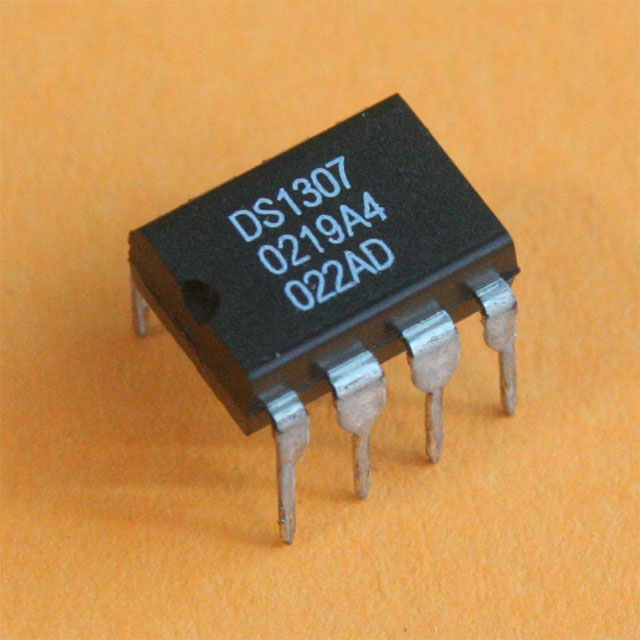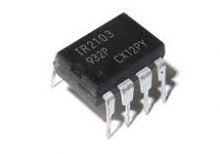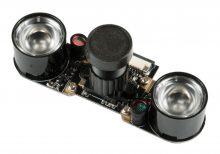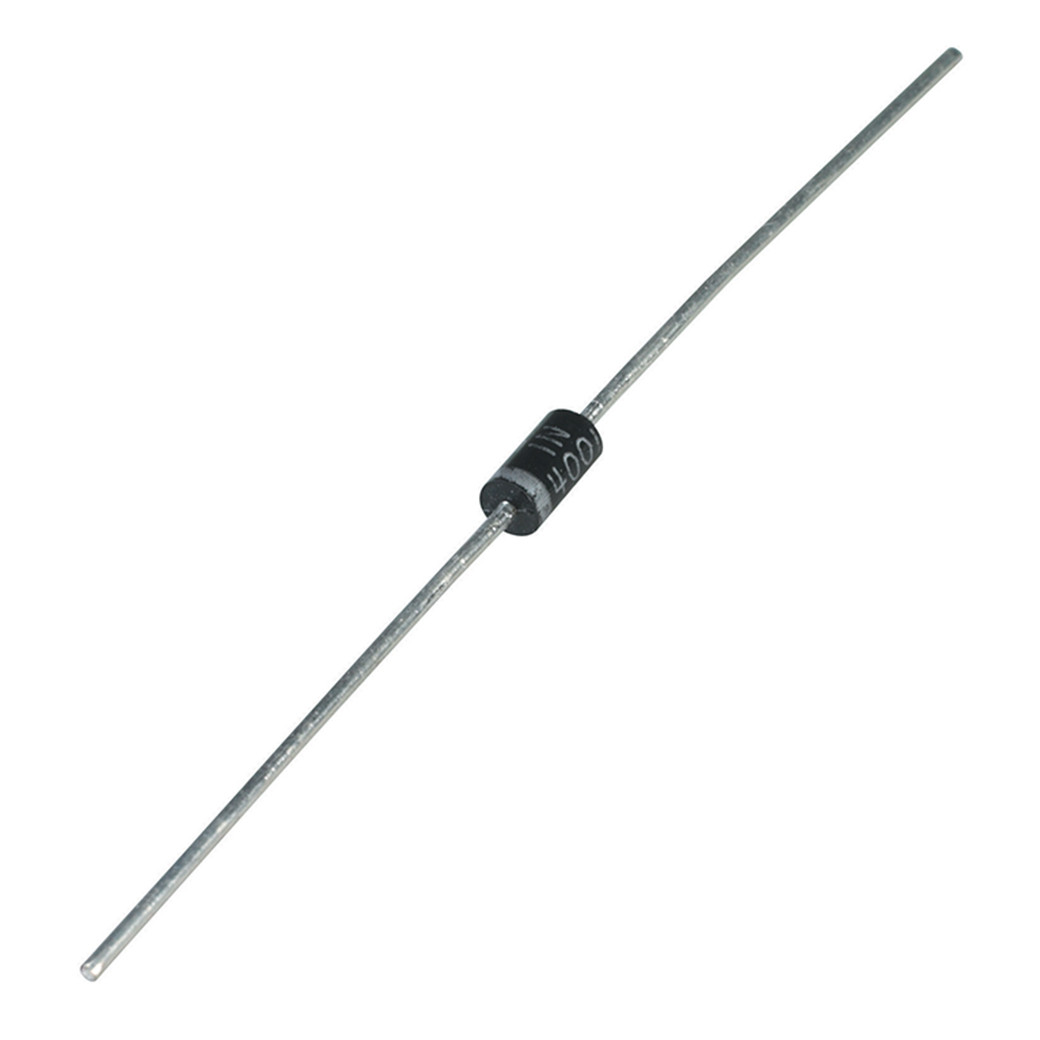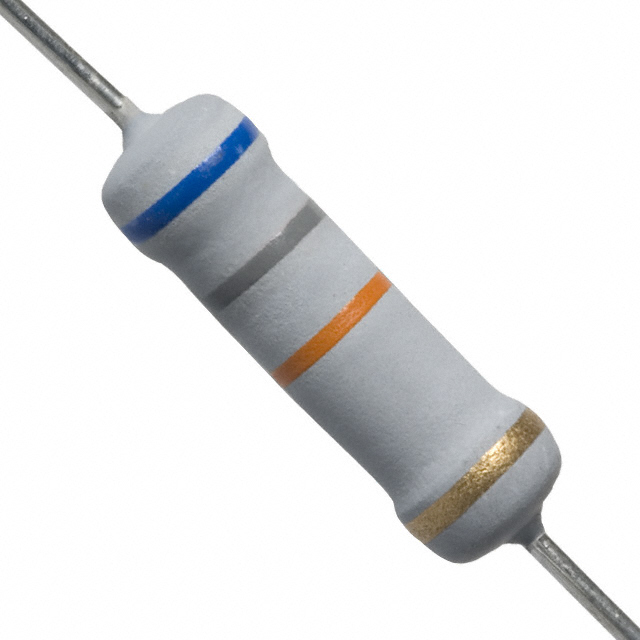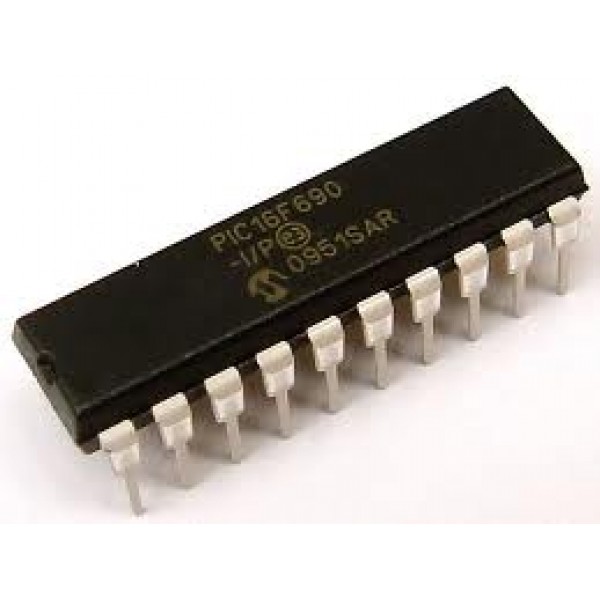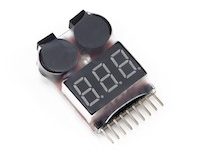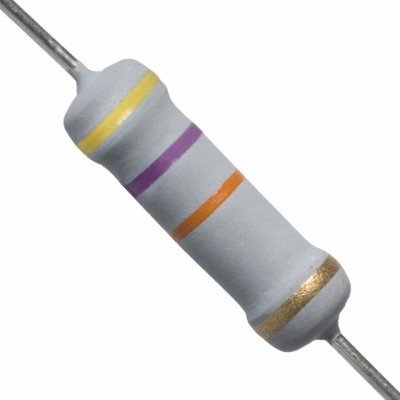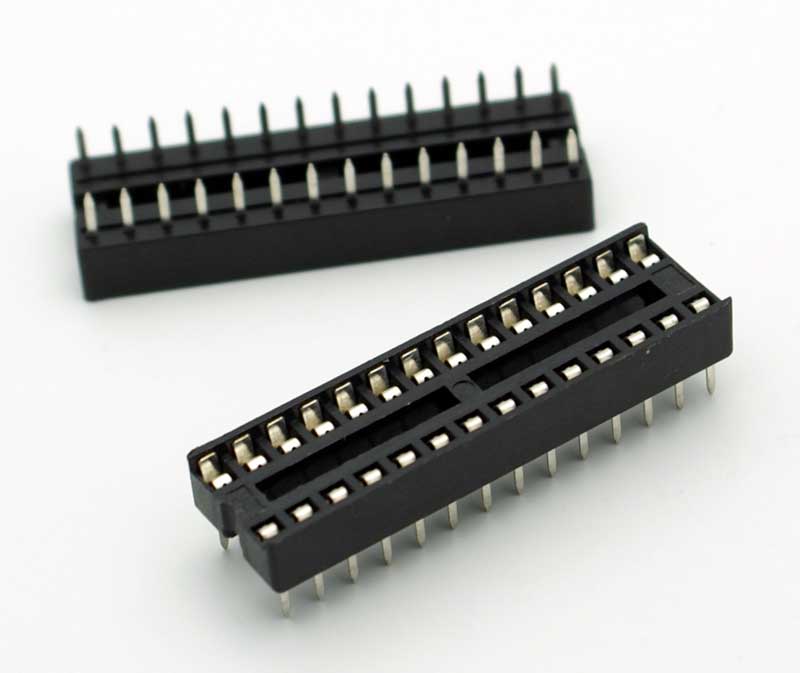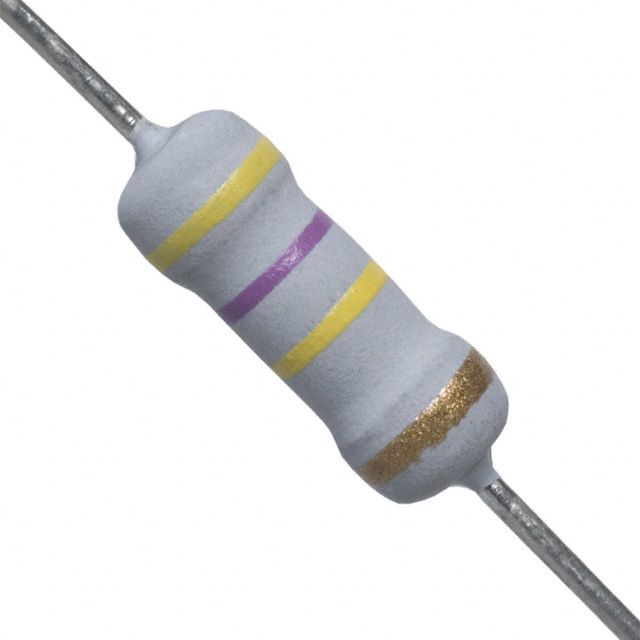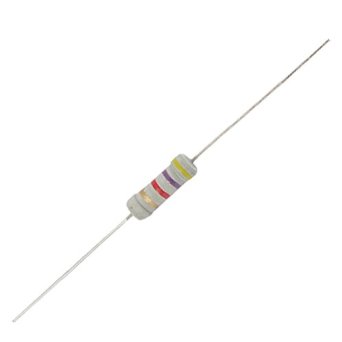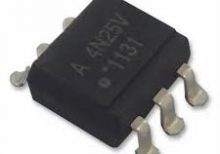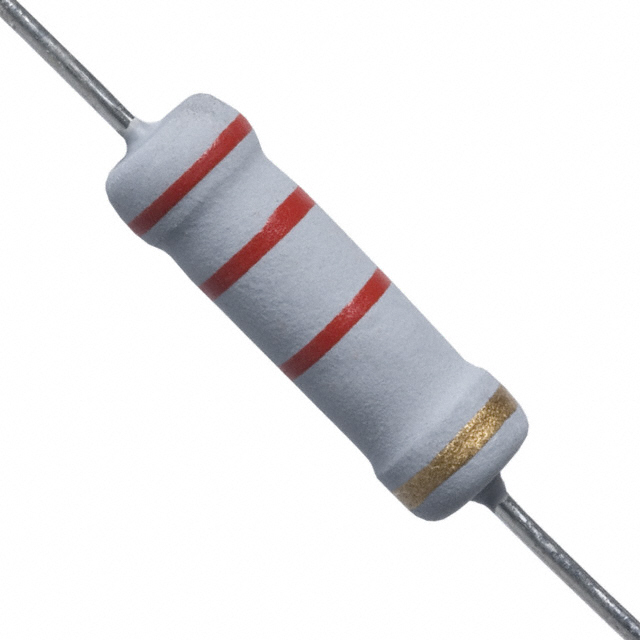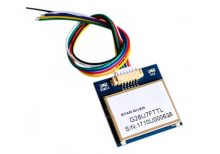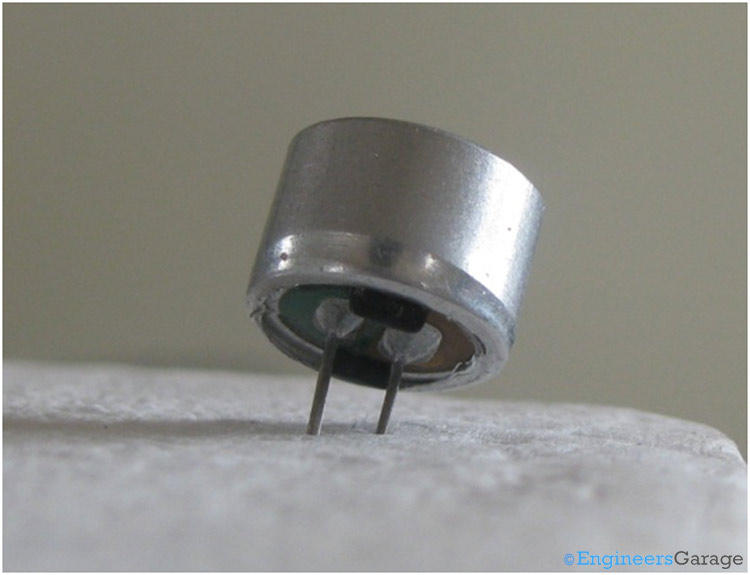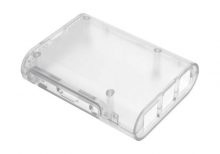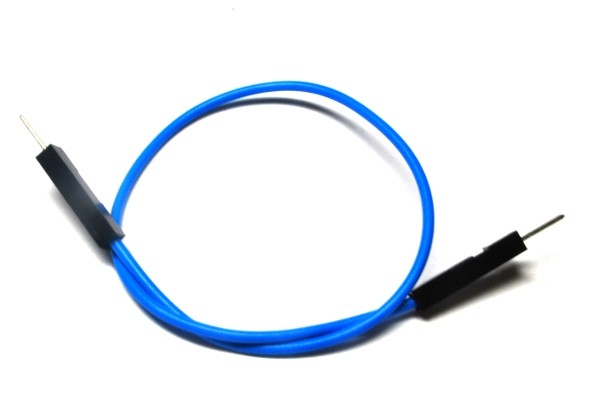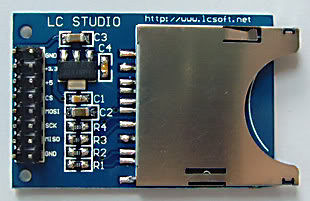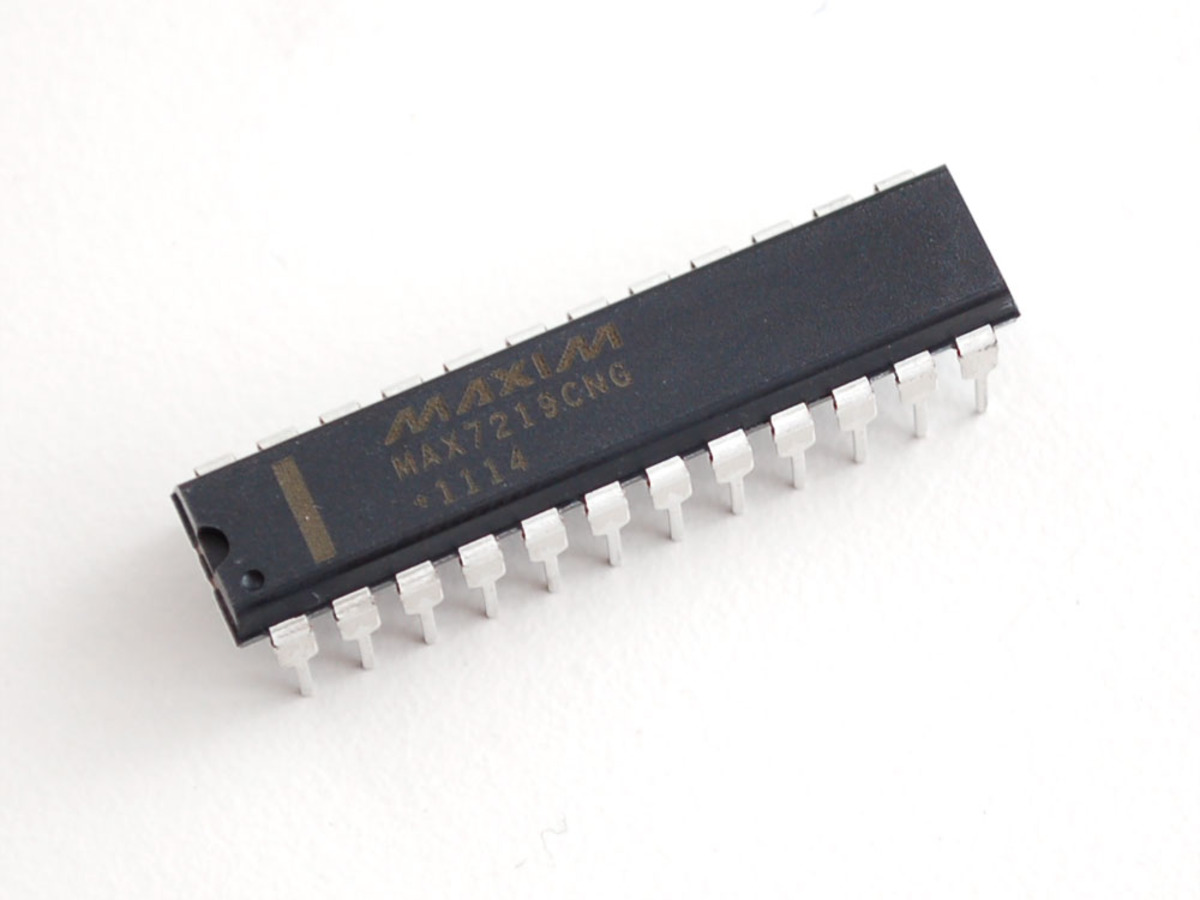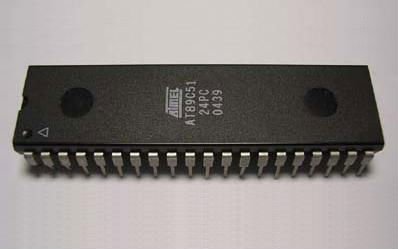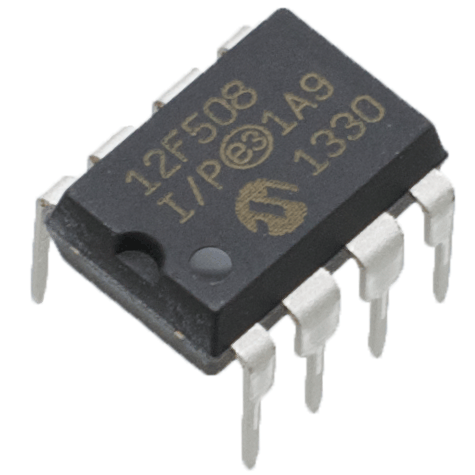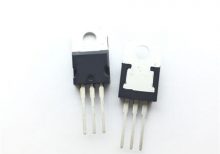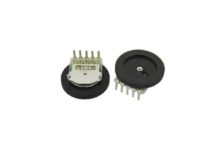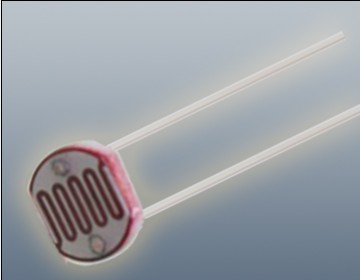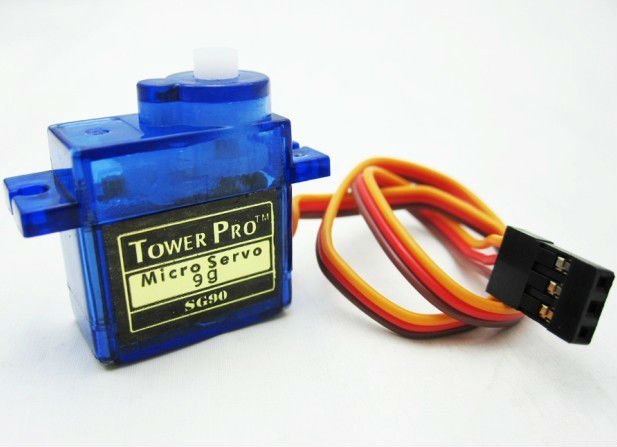|
Description |
The PIC16F72 is an 8-bit microcontroller from Microchip’s PIC family, featuring a 14-bit instruction set architecture and a range of peripherals designed for embedded applications. It includes a 13-bit program counter, a variety of I/O ports, timers, and an integrated analog-to-digital converter (ADC), making it suitable for applications requiring basic processing and control functions.
Key Features:
- 14-bit instruction set architecture
- 4KB Flash program memory
- 192 bytes SRAM data memory
- 128 bytes Electrically Erasable Programmable Read-Only Memory (EEPROM)
- 16-bit Timer0 and 8-bit Timer1
- 10-bit Analog-to-Digital Converter (ADC)
- 13 I/O pins with interrupt-on-change capability
- Enhanced PWM module
- Watchdog Timer (WDT) and Power-on Reset (POR)
- Low-power sleep mode
Technical Specifications:
- Operating Voltage: 2.0V to 5.5V
- Operating Frequency: Up to 20MHz
- Program Memory Size: 4KB (Flash)
- Data Memory Size: 192 bytes SRAM
- EEPROM Size: 128 bytes
- Number of I/O Pins: 13
- Analog-to-Digital Converter (ADC): 10-bit, up to 8 channels
- Timers: 16-bit Timer0, 8-bit Timer1
- Package Type: 18-pin DIP, SOIC, SSOP
Applications:
- Embedded systems
- Home automation
- Industrial control
- Consumer electronics
- Automotive applications
- Data acquisition systems
Usage:
- Connect the microcontroller to a power supply within the operating voltage range.
- Program the microcontroller using the Flash program memory for storing application code.
- Utilize the I/O pins for interfacing with external devices and sensors.
- Configure the ADC and timers for data acquisition and timing functions as needed.
- Implement necessary peripheral configurations in the software.
Caution:
- Ensure proper voltage levels are maintained to prevent damage.
- Avoid exceeding the maximum current ratings for I/O pins.
- Handle the device carefully to prevent static discharge damage.
Datasheet:
For detailed technical specifications, refer to the PIC16F72 Datasheet.
|
The 2N3904 is an NPN bipolar junction transistor (BJT) designed for general-purpose low-power switching and amplification. Renowned for its high current gain and low noise, the 2N3904 is versatile and widely used in various electronic circuits, including signal processing, switching, and low-power amplification.
Key Features:
- Type: NPN Bipolar Junction Transistor (BJT)
- High Gain: Provides high current gain (hFE) for effective signal amplification
- Low Noise: Suitable for low-noise applications
- Compact Package: Available in a TO-92 package, ideal for space-constrained designs
Technical Specifications:
- Collector-Emitter Voltage (Vce): 40V
- Collector-Base Voltage (Vcb): 60V
- Emitter-Base Voltage (Veb): 6V
- Collector Current (Ic): 200mA
- Power Dissipation (Ptot): 625mW
- DC Current Gain (hFE): 30 to 300
- Transition Frequency (ft): 300MHz
- Package Type: TO-92
Applications:
- Signal Amplification: Ideal for use in low-power amplification circuits
- Switching: Suitable for general-purpose switching applications
- Audio Circuits: Effective in audio signal processing and low-power amplification
- General Purpose: Versatile for various electronic applications and projects
Usage:
- Circuit Design: Integrate the 2N3904 transistor into your circuit based on your specific application requirements.
- Biasing: Properly bias the transistor to ensure optimal performance for amplification or switching.
- Connection: Connect the collector, base, and emitter terminals as per your circuit design.
- Testing: Verify the transistor’s operation in your circuit to ensure it functions correctly.
Caution:
- Voltage and Current Ratings: Adhere to the maximum voltage and current ratings to prevent damage.
- Heat Management: Ensure adequate heat dissipation to avoid overheating, especially in high-current applications.
- Static Electricity: Handle with care to avoid damage from electrostatic discharge (ESD).
Datasheet:
For detailed technical specifications, refer to the 2N3904 Transistor Datasheet.
|
The DS1307 is a real-time clock (RTC) IC from Maxim Integrated, designed for accurate timekeeping in electronic systems. It provides reliable and precise time and date information and features a battery backup to maintain time during power outages. The DS1307 is commonly used in applications such as clocks, data loggers, and time-based control systems.
Key Features:
- Accurate real-time clock (RTC) with date and time functions
- Battery backup to maintain time during power loss
- Communicates via I²C interface
- High-precision timekeeping with a 32.768 kHz crystal oscillator
- Provides time and date information (seconds, minutes, hours, day, date, month, year)
- Low power consumption with battery operation
- Simple interface with microcontrollers and digital systems
Technical Specifications:
- IC Type: Real-Time Clock (RTC)
- Interface: I²C (2-wire)
- Operating Voltage: 4.5V to 5.5V
- Current Consumption: 1µA (battery backup mode), 1mA (active mode)
- Temperature Range: -40°C to +85°C
- Clock Frequency: 32.768 kHz (crystal oscillator)
- Accuracy: ±2 minutes per month at 25°C
- Battery Backup: CR2032 or equivalent lithium battery (not included)
- Package Type: DIP-8, SOIC-8
Applications:
- Real-time clocks for various electronic devices
- Data logging and timestamping
- Time-based control systems
- Embedded systems requiring accurate timekeeping
- Educational projects and prototypes
Usage:
- Connect the DS1307 chip to your microcontroller or development board using the I²C interface (SDA and SCL lines).
- Insert a compatible lithium battery to provide backup power for timekeeping.
- Use the appropriate I²C library or driver to interface with the DS1307 and configure the current date and time.
- Retrieve and process time and date information as required for your application.
Caution:
- Ensure proper installation of the battery to maintain time during power outages.
- Handle the IC with care to avoid damage to the pins or internal components.
- Verify I²C connections and power supply to ensure accurate operation.
Datasheet:
For detailed technical specifications, refer to the DS1307 Datasheet.
|
The IR2103PBF is a high voltage, high-speed power MOSFET and IGBT driver with independent high and low side referenced output channels. It is designed to drive high-side and low-side N-channel power MOSFETs or IGBTs in a half-bridge configuration. The device features a floating channel designed for bootstrap operation, allowing it to drive the high-side switch up to 600V.
Key Features:
- Gate drive supply range from 10V to 20V
- Floating channel can be used to drive an N-channel power MOSFET or IGBT in the high-side configuration up to 600V
- Gate drive outputs: 2A peak source, 2A peak sink
- Independent high-side and low-side channels
- Under-voltage lockout for both channels
- Logic input (IR2103) compatible with standard CMOS or LSTTL outputs
- Matched propagation delay for both channels
- Low side output in phase with input signal
- High side output out of phase with input signal
Technical Specifications:
- Supply Voltage (Vcc): 10V – 20V
- Floating Supply Voltage (Vb): up to 600V
- Logic Supply Voltage (Vss): -5V – 20V
- Output Source Current (Io+): 2A
- Output Sink Current (Io-): 2A
- Gate Drive Output Voltage (Vout): 10V – 20V
- Propagation Delay: 120ns (typical)
- Operating Temperature Range: -40°C to +125°C
- Package: PDIP-8
Applications:
- Motor drive applications
- Induction heating
- UPS systems
- DC-DC converters
- Switch-mode power supplies
Datasheet:
For detailed technical information, please refer to the IR2103PBF Datasheet.
|
The 1N4007 is a general-purpose rectifier diode designed for high-voltage applications. It is widely used in power supply circuits for converting AC to DC, as well as in protection circuits to prevent damage from reverse voltage. The 1N4007 can handle moderate current and high voltage, making it suitable for a variety of electronic and electrical applications.
Key Features:
- High-voltage rectifier diode
- Capable of handling moderate current
- Provides efficient rectification and protection
- Suitable for various power supply and switching applications
- Low reverse leakage current
- High reliability and durability
Technical Specifications:
- Type: Rectifier Diode
- Maximum Reverse Voltage: 1000V
- Maximum Forward Current: 1A
- Forward Voltage Drop: 1.1V (typical at 1A)
- Reverse Leakage Current: 5µA (typical at 1000V)
- Surge Current Rating: 30A (for 8.3ms pulse)
- Operating Temperature Range: -55°C to +150°C
- Package Type: DO-41
Applications:
- Power supply rectification
- Voltage regulation
- Protection circuits for reverse polarity
- Switching and signal rectification
- AC to DC conversion in electronic devices
Usage:
- Integrate the 1N4007 diode into your circuit by connecting the anode to the positive voltage and the cathode to the negative or ground.
- Use the diode for rectifying AC signals or protecting against reverse polarity.
- Ensure proper heat dissipation if operating near the maximum current rating.
Caution:
- Avoid exceeding the maximum reverse voltage and forward current ratings to prevent damage to the diode.
- Ensure proper heat management to maintain reliable operation.
- Verify correct polarity when installing the diode in the circuit.
Datasheet:
For detailed technical specifications, refer to the 1N4007 Datasheet.
|
The Raspberry Pi IR Night Vision 500W Camera is an advanced imaging module designed for Raspberry Pi boards, featuring a high-resolution 500W (500,000 pixels) sensor and infrared (IR) night vision capabilities. This camera is ideal for low-light and nighttime surveillance, as well as various imaging applications that require clear visuals in darkness.
Key Features:
- High Resolution: 500W (500,000 pixels) for clear and detailed imaging.
- Infrared Night Vision: Equipped with IR LEDs for effective night vision capabilities.
- Compatible with Raspberry Pi: Designed to work seamlessly with Raspberry Pi boards.
- Easy Integration: Simple to connect and integrate with Raspberry Pi for various applications.
- Wide Application Range: Suitable for surveillance, security systems, and night-time imaging.
Technical Specifications:
- Sensor Resolution: 500W (500,000 pixels)
- Infrared LEDs: Integrated for night vision and low-light performance.
- Interface: Compatible with Raspberry Pi via the camera interface (CSI).
- Field of View: Varies based on lens configuration.
- Power Supply: Powered through the Raspberry Pi board or external power source.
- Operating Temperature: Typically operates within standard temperature ranges for electronic devices.
Applications:
- Surveillance Systems: Ideal for security cameras and monitoring in low-light conditions.
- Night-Time Imaging: Provides clear visuals in darkness for various imaging needs.
- Raspberry Pi Projects: Useful for projects involving image capture and analysis.
- Security and Monitoring: Enhances security systems with night vision capabilities.
|
The A733 is a PNP bipolar junction transistor (BJT) designed for general-purpose low-power amplification and switching applications. It is known for its high current gain and low noise, making it suitable for various electronic circuits, including signal processing, low-power amplification, and switching circuits.
Key Features:
- Type: PNP Bipolar Junction Transistor (BJT)
- High Gain: Provides high current gain (hFE) for effective signal amplification
- Low Noise: Suitable for low-noise applications
- Compact Package: Available in a TO-92 package, ideal for space-constrained designs
Technical Specifications:
- Collector-Emitter Voltage (Vce): -50V
- Collector-Base Voltage (Vcb): -50V
- Emitter-Base Voltage (Veb): -5V
- Collector Current (Ic): -150mA
- Power Dissipation (Ptot): 400mW
- DC Current Gain (hFE): 100 to 600
- Transition Frequency (ft): 150MHz
- Package Type: TO-92
Applications:
- Signal Amplification: Ideal for low-power amplification circuits
- Switching: Suitable for general-purpose switching applications
- Audio Circuits: Effective in audio signal processing and low-power amplification
- General Purpose: Versatile for various electronic applications and projects
Usage:
- Circuit Design: Integrate the A733 transistor into your circuit based on your specific application requirements.
- Biasing: Properly bias the transistor to ensure optimal performance for amplification or switching.
- Connection: Connect the collector, base, and emitter terminals as per your circuit design.
- Testing: Verify the transistor’s operation in your circuit to ensure it functions correctly.
Caution:
- Voltage and Current Ratings: Adhere to the maximum voltage and current ratings to prevent damage.
- Heat Management: Ensure adequate heat dissipation to avoid overheating, especially in high-current applications.
- Static Electricity: Handle with care to avoid damage from electrostatic discharge (ESD).
Datasheet:
For detailed technical specifications, refer to the A733 Transistor Datasheet.
|
The 1N4001 is a general-purpose rectifier diode designed for a wide range of applications including power supplies, converters, and freewheeling diodes. This silicon diode is known for its reliability, low forward voltage drop, and high surge current capability. It is suitable for use in circuits requiring rectification, reverse polarity protection, and other general-purpose diode functions.
Key Features:
- Type: Silicon rectifier diode
- Forward Voltage Drop (Vf): Typically 1.1V at 1A
- Average Rectified Current (Io): 1A
- Peak Repetitive Reverse Voltage (Vrrm): 50V
- Surge Current (Ifsm): 30A
- Recovery Time: Standard recovery
- Package: DO-41
Technical Specifications:
- Maximum Repetitive Peak Reverse Voltage (Vrrm): 50V
- Maximum RMS Voltage (Vrms): 35V
- Maximum DC Blocking Voltage (Vdc): 50V
- Average Rectified Output Current (Io): 1A
- Non-Repetitive Peak Forward Surge Current (Ifsm): 30A
- Forward Voltage (Vf): 1.1V at 1A
- Reverse Current (Ir): 5µA at 50V
- Operating Temperature Range: -65°C to +150°C
Applications:
- Power supply rectification
- Freewheeling diode in motor applications
- Reverse polarity protection
- Converters and inverters
- General-purpose diode functions
Usage:
- Connect the anode (positive lead) to the positive side of the circuit.
- Connect the cathode (marked with a band) to the negative side of the circuit.
- Ensure the diode is correctly oriented to prevent reverse voltage damage.
- Integrate the diode into the circuit to achieve the desired rectification or protection function.
Caution:
- Verify the voltage and current ratings to ensure compatibility with your circuit.
- Avoid exceeding the maximum ratings to prevent damage to the diode.
- Ensure proper thermal management if operating near maximum current ratings.
Datasheet:
For detailed technical specifications, refer to the 1N4001 Diode Datasheet.
|
The 11.0592MHz Crystal Oscillator is a precision timing device designed to generate a stable clock signal at a frequency of 11.0592MHz. This specific frequency is often used in applications requiring accurate timing and synchronization, such as microcontrollers, communication systems, and digital clocks. The crystal oscillator offers high stability, low jitter, and precise frequency control.
Key Features:
- Frequency: 11.0592MHz
- High stability and low jitter
- Low power consumption
- Hermetically sealed package
- Excellent frequency accuracy and reliability
- Wide operating temperature range
Technical Specifications:
- Frequency: 11.0592MHz
- Frequency Stability: ±30ppm (parts per million)
- Load Capacitance: 18pF (typical)
- Equivalent Series Resistance (ESR): 50 ohms (maximum)
- Drive Level: 100µW (typical)
- Aging: ±5ppm/year
- Operating Temperature Range: -20°C to +70°C (standard); -40°C to +85°C (extended)
- Storage Temperature Range: -55°C to +125°C
- Package Type: HC-49S, SMD (Surface Mount Device) or through-hole
- Dimensions: Length: 11.5mm, Width: 4.8mm, Height: 4.2mm (for HC-49S package)
Applications:
- Microcontroller Clock: Provides a stable clock signal for microcontroller-based systems, especially in timing-critical applications.
- Communication Equipment: Ensures precise timing and synchronization in RF and communication circuits.
- Digital Clocks: Used in digital clocks and timing devices for accurate timekeeping.
- Frequency Synthesis: Generates accurate frequencies for various electronic applications, including frequency counters and synthesizers.
- Timers and Counters: Provides a reliable clock source for timing and counting applications.
Usage:
- Select the appropriate package type (HC-49S or SMD) based on your PCB design.
- Ensure the load capacitance matches the circuit requirements.
- Solder the crystal oscillator onto the PCB, ensuring proper connection to the circuit.
- Verify the stability and accuracy of the generated clock signal using an oscilloscope or frequency counter.
Caution:
- Handle the crystal oscillator with care to avoid physical damage.
- Avoid exposure to extreme temperatures beyond the specified operating range.
- Ensure the drive level does not exceed the recommended value to prevent damage.
|
The 68KΩ 2W resistor is a fixed-value resistor designed for applications requiring high power dissipation and precise resistance. It is commonly used in electronic circuits to limit current, divide voltage, and stabilize signals. The robust construction of this resistor ensures reliable performance in high-power and precision applications.
Key Features:
- Fixed resistance value of 68KΩ
- Power rating of 2 watts
- Flame-resistant coating for enhanced safety
- High stability and durability
- Axial leads for easy mounting on printed circuit boards (PCBs)
- Suitable for use in high-power and precision applications
Technical Specifications:
- Resistance Value: 68KΩ
- Power Rating: 2W
- Tolerance: ±5% (J) or ±1% (F), depending on the model
- Temperature Coefficient: ±200 ppm/°C
- Operating Temperature Range: -55°C to +155°C
- Body Size: Approx. 4.5mm (Diameter) x 14.5mm (Length)
- Lead Diameter: Approx. 0.8mm
- Material: Metal oxide film or carbon film
- Maximum Working Voltage: 350V
- Maximum Overload Voltage: 500V
Applications:
- Signal Processing: Ideal for use in circuits for signal conditioning and noise filtering.
- Voltage Dividers: Commonly used in voltage divider networks in electronic circuits.
- Power Supply Circuits: Applied in power supply circuits to regulate and limit current.
- General Electronics: Suitable for various electronic devices and circuits requiring high power dissipation.
Usage:
- Identify the resistor’s resistance value and power rating by reading the color code or label.
- Solder the resistor onto the PCB or integrate it into the circuit using the axial leads.
- Ensure proper placement for effective heat dissipation.
- Verify the resistor’s connections and test the circuit to ensure correct operation.
Caution:
- Do not exceed the resistor’s maximum power rating to avoid overheating and damage.
- Ensure good ventilation and heat dissipation in high-power applications.
- Handle with care to avoid damaging the resistor’s leads and coating.
- Confirm the resistor’s resistance value and tolerance before use in precision applications..
|
The Atmega 328P-PU is a high-performance, low-power 8-bit AVR microcontroller from Microchip Technology, commonly used in Arduino boards like the Arduino Uno. It features advanced RISC architecture with 32KB of ISP flash memory, 2KB of SRAM, and 1KB of EEPROM. This microcontroller is suitable for a wide range of applications, including embedded systems, consumer electronics, and DIY electronics projects.
Key Features:
- Advanced RISC architecture
- 32KB of in-system self-programmable flash memory
- 2KB SRAM and 1KB EEPROM
- 23 general-purpose I/O lines
- 32 general-purpose working registers
- Three flexible timer/counters with compare modes
- Internal and external interrupts
- Serial programmable USART
- Master/slave SPI serial interface
- On-chip analog comparator
- 10-bit ADC with 6 multiplexed channels
- Operating voltage range of 1.8V to 5.5V
- Low power consumption in active and sleep modes
Technical Specifications:
- Architecture: 8-bit AVR
- Flash Memory: 32KB
- SRAM: 2KB
- EEPROM: 1KB
- Clock Speed: Up to 20 MHz (with external crystal)
- Operating Voltage: 1.8V to 5.5V
- Digital I/O Pins: 23
- PWM Channels: 6
- Analog Input Channels: 6
- ADC Resolution: 10-bit
- Timers: 1 x 16-bit, 2 x 8-bit
- Communication Interfaces: USART, SPI, I2C
- Package Type: PDIP-28 (Plastic Dual In-line Package)
- Operating Temperature Range: -40°C to +85°C
Applications:
- Arduino development boards
- Consumer electronics
- Embedded systems
- Robotics
- Home automation
- DIY electronics projects
- Industrial automation
Usage:
- Programming:
- Use an AVR programmer or Arduino board to program the Atmega 328P-PU.
- Commonly programmed using the Arduino IDE for ease of use.
- Connect the microcontroller to your development environment using the appropriate hardware and software tools.
- Circuit Design:
- Integrate the Atmega 328P-PU into your circuit with necessary external components like crystal oscillators, capacitors, and resistors.
- Ensure proper power supply and grounding for stable operation.
- Interfacing:
- Utilize the I/O pins for interfacing with sensors, actuators, displays, and other peripherals.
- Use communication interfaces like USART, SPI, and I2C for data exchange with other devices.
Caution:
- Handle the microcontroller with care to avoid damage from electrostatic discharge (ESD).
- Ensure proper power supply voltage and connections to prevent damage.
- Follow the manufacturer’s guidelines for programming and operation.
Datasheet:
For detailed technical specifications, refer to the Atmega 328P Datasheet.
|
The PIC16F690 is a low-power 8-bit microcontroller from Microchip’s PIC16 family, designed for a range of applications requiring moderate processing power and peripheral integration. It offers an array of features including EEPROM memory, a variety of timers, and multiple I/O options, making it ideal for embedded control applications.
Key Features:
- 14-bit instruction set architecture
- 7-bit wide instruction set
- 384 bytes of RAM
- 128 bytes EEPROM
- 10-bit Analog-to-Digital Converter (ADC)
- Two Timer modules (Timer0 and Timer1)
- Watchdog Timer (WDT)
- Capture/Compare/PWM (CCP) module
- Low-power operation with multiple sleep modes
- Programmable code protection
Technical Specifications:
- Operating Voltage: 2.0V to 5.5V
- Operating Frequency: Up to 20MHz
- Program Memory Size: 7KB (Flash)
- Data Memory Size: 384 bytes SRAM
- EEPROM Size: 128 bytes
- Number of I/O Pins: 18
- Timers: 8-bit Timer0, 16-bit Timer1
- ADC Resolution: 10-bit
- Package Type: 14-pin PDIP, 14-pin SOIC, 14-pin SSOP
Applications:
- Consumer electronics
- Automotive control systems
- Industrial automation
- Home appliances
- Data acquisition systems
- Communication devices
Usage:
- Power the microcontroller within the recommended voltage range.
- Program the PIC16F690 using its Flash program memory to suit application needs.
- Utilize the ADC for analog signal processing and Timer modules for precise timing tasks.
- Interface with peripherals and manage power consumption using available sleep modes.
Caution:
- Verify power supply connections to prevent damage.
- Ensure proper handling to avoid electrostatic discharge (ESD) damage.
- Adhere to maximum current ratings for I/O pins to prevent overloading.
Datasheet:
For detailed technical specifications, refer to the PIC16F690 Datasheet.
|
The PIC12F509 is an 8-bit microcontroller from Microchip’s PIC series, designed for low-power and compact applications. It features a minimalistic design with essential peripherals, making it ideal for simple control tasks in embedded systems where space and power efficiency are critical.
Key Features:
- 8-bit architecture
- 1KB Flash program memory
- 64 bytes SRAM data memory
- 64 bytes Electrically Erasable Programmable Read-Only Memory (EEPROM)
- 5 I/O pins
- 8-bit Timer0
- 8-bit Watchdog Timer (WDT)
- Low-power sleep mode
Technical Specifications:
- Operating Voltage: 2.0V to 5.5V
- Operating Frequency: Up to 8MHz
- Program Memory Size: 1KB (Flash)
- Data Memory Size: 64 bytes SRAM
- EEPROM Size: 64 bytes
- Number of I/O Pins: 5
- Timers: 8-bit Timer0
- Package Type: 8-pin DIP, 8-pin SOIC
Applications:
- Low-power sensors and controls
- Simple automation tasks
- Consumer electronics
- Battery-powered devices
- Basic monitoring and logging systems
Usage:
- Connect the microcontroller to a power supply within the operating voltage range.
- Program the microcontroller using its Flash program memory for specific application tasks.
- Utilize the 5 I/O pins for interfacing with external devices.
- Implement timing functions with the 8-bit Timer0 and manage low-power states with the sleep mode.
Caution:
- Ensure the microcontroller is powered within the specified voltage range to avoid damage.
- Adhere to maximum current ratings for I/O pins.
- Handle the microcontroller carefully to prevent static discharge damage.
Datasheet:
For detailed technical specifications, refer to the PIC12F509 Datasheet.
|
The L7824 is a three-terminal positive voltage regulator that provides a fixed output of +24V. Designed for reliable and efficient voltage regulation, it is suitable for powering a range of electronic circuits and devices from a higher input voltage source. This regulator can supply up to 1.5A of current and includes built-in protection features to safeguard against thermal overload and short circuits.
Key Features:
- Fixed positive output voltage of +24V
- Capable of delivering up to 1.5A of current
- High voltage regulation with minimal dropout
- Built-in thermal overload and short-circuit protection
- Easy to use with minimal external components
- Ideal for applications requiring a stable +24V power supply
Technical Specifications:
- Output Voltage: +24V
- Maximum Output Current: 1.5A
- Input Voltage Range: Up to +35V
- Dropout Voltage: 2V (typical)
- Line Regulation: 0.01% (typical)
- Load Regulation: 0.1% (typical)
- Package Type: TO-220, D2PAK
Applications:
- Positive voltage power supplies
- Voltage regulation in electronic circuits
- Power management in devices requiring +24V
- Replacement for higher voltage linear power supplies
Usage:
- Connect the positive input voltage to the input terminal (IN).
- Connect the output terminal (OUT) to the load or circuit requiring +24V.
- Ensure the ground terminal (GND) is connected to the system ground.
- Use a heatsink if necessary to handle thermal dissipation, especially under high load conditions.
Caution:
- Do not exceed the maximum input voltage rating.
- Ensure proper heat dissipation to prevent overheating.
- Verify correct polarity to avoid damage to the regulator and connected components.
Datasheet:
For detailed technical specifications, refer to the L7824 Datasheet.
|
Description:
The 1-8S LiPo battery voltage detector with buzzer is an essential tool for monitoring and ensuring the safe operation of lithium polymer (LiPo) batteries used in RC models, drones, and other electronic devices. It provides real-time voltage detection for 1 to 8 series LiPo batteries, alerting users to low voltage conditions with an audible buzzer alarm. This compact device helps prevent over-discharge, which can damage batteries and reduce their lifespan, ensuring optimal performance and safety during use.
Key Features:
- Compatible Battery Types: 1-8S LiPo/Li-ion/LiMn/LiFe
- Voltage Detection Range: 2.7V to 25.2V (1S to 8S)
- Audible Buzzer Alarm: Alerts when voltage drops below preset levels
- Compact and Lightweight: Easy to carry and use in the field
- LED Indicators: Display battery voltage status for quick reference
- Reverse Polarity Protection: Prevents damage due to incorrect battery connection
Technical Specifications:
- Input Voltage: DC 5-27V (powered by the battery being tested)
- Accuracy: ±0.01V
- Operating Temperature: 0°C to 40°C
- Dimensions: Compact and portable design
- Weight: Lightweight for easy handling
Applications:
- RC Models (Cars, Planes, Boats)
- Drones and UAVs (Unmanned Aerial Vehicles)
- Portable Electronic Devices
- Battery Maintenance and Monitoring
|
47K ohm 2W flame proof metal oxide resisto
The 47KΩ 2W resistor is a fixed-value resistor designed for applications requiring high power dissipation and moderate resistance. It is commonly used in electronic circuits to limit current, divide voltage, and stabilize signals. The resistor’s robust construction ensures reliable performance in high-power and precision applications.
Key Features:
- Fixed resistance value of 47KΩ
- Power rating of 2 watts
- Flame-resistant coating for enhanced safety
- High stability and durability
- Axial leads for easy mounting on printed circuit boards (PCBs)
- Suitable for use in high-power and precision applications
Technical Specifications:
- Resistance Value: 47KΩ
- Power Rating: 2W
- Tolerance: ±5% (J) or ±1% (F), depending on the model
- Temperature Coefficient: ±200 ppm/°C
- Operating Temperature Range: -55°C to +155°C
- Body Size: Approx. 4.5mm (Diameter) x 14.5mm (Length)
- Lead Diameter: Approx. 0.8mm
- Material: Metal oxide film or carbon film
- Maximum Working Voltage: 350V
- Maximum Overload Voltage: 500V
Applications:
- Signal Processing: Ideal for use in circuits for signal conditioning and noise filtering.
- Voltage Dividers: Commonly used in voltage divider networks in electronic circuits.
- Power Supply Circuits: Applied in power supply circuits to regulate and limit current.
- General Electronics: Suitable for various electronic devices and circuits requiring high power dissipation.
Usage:
- Identify the resistor’s resistance value and power rating by reading the color code or label.
- Solder the resistor onto the PCB or integrate it into the circuit using the axial leads.
- Ensure proper placement for effective heat dissipation.
- Verify the resistor’s connections and test the circuit to ensure correct operation.
Caution:
- Do not exceed the resistor’s maximum power rating to avoid overheating and damage.
- Ensure good ventilation and heat dissipation in high-power applications.
- Handle with care to avoid damaging the resistor’s leads and coating.
- Confirm the resistor’s resistance value and tolerance before use in precision applications.
r
|
The 60W Hot Melt Glue Gun is a powerful and versatile adhesive tool designed for high-efficiency bonding of various materials such as wood, plastic, fabric, and metal. This glue gun heats up quickly and provides a strong, durable bond, making it ideal for crafting, DIY projects, repairs, and industrial applications.
Key Features:
- High power rating of 60W for fast heating and melting of glue sticks
- Ergonomic design for comfortable and prolonged use
- Adjustable stand for stability during operation
- Quick heating time, typically ready to use in 3-5 minutes
- Compatible with standard hot glue sticks (usually 11mm diameter)
- On/Off switch for easy operation and energy saving
Technical Specifications:
- Power Rating: 60W
- Voltage: Typically 220V AC (varies by region)
- Heat Time: Approximately 3-5 minutes to reach operating temperature
- Temperature Range: Approximately 160°C to 180°C (320°F to 356°F)
- Glue Stick Diameter: Compatible with 11mm diameter glue sticks
- Weight: Typically around 250-300 grams
- Material: Durable plastic body with metal nozzle
Applications:
- Crafting and DIY projects
- Repairs of household items and electronics
- Assembly of wooden, plastic, and metal parts
- Artistic and creative projects
- General-purpose adhesive applications
Usage:
- Insert the glue stick into the rear of the glue gun.
- Plug in the glue gun and turn it on using the switch.
- Wait for 3-5 minutes for the glue gun to heat up and melt the glue.
- Squeeze the trigger to apply the molten glue to the surfaces you wish to bond.
- Hold the surfaces together until the glue sets (usually within 10-20 seconds).
- Turn off the glue gun and unplug it when not in use.
Caution:
- Handle the glue gun carefully to avoid burns from the hot glue and the heated nozzle.
- Ensure the glue gun is placed on a heat-resistant surface or its stand while in use.
- Keep out of reach of children and follow the manufacturer’s safety instructions.
Datasheet:
For detailed technical specifications, refer to the 60W Hot Melt Glue Gun Datasheet.
|
The IC Socket with 28 pins is a precision-molded, dual-in-line (DIP) socket designed to house integrated circuits (ICs) with 28 pins. It provides a reliable and convenient way to mount ICs on a printed circuit board (PCB) without soldering the IC directly, allowing for easy replacement and reusability. The socket ensures a secure and stable connection while protecting the IC from potential damage during assembly or troubleshooting.
Key Features:
- Accommodates ICs with 28 pins in a dual-in-line package (DIP)
- Facilitates easy insertion and removal of ICs
- Precision-molded body for reliable and stable connections
- Tin-plated or gold-plated contacts for excellent conductivity and corrosion resistance
- Low insertion force for easy handling
- Compatible with standard PCBs
- Available in various heights and profiles to suit different applications
Technical Specifications:
- Number of Pins: 28
- Pin Pitch: 2.54mm (0.1 inches)
- Contact Material: Tin-plated or gold-plated contacts
- Body Material: High-temperature thermoplastic
- Operating Temperature Range: -40°C to +105°C
- Dimensions: Varies by manufacturer (common size: 35mm x 10mm x 5mm)
- Mounting Type: Through-hole
Applications:
- Prototyping and development of electronic circuits
- Easy replacement and upgrading of ICs
- Protecting ICs from heat damage during soldering
- Ensuring reliable connections in electronic devices
- Use in educational and hobbyist projects
Usage:
- Insert the IC socket into the PCB aligning the pins with the corresponding holes.
- Solder the socket pins to the PCB, ensuring proper connection.
- Insert the IC into the socket, ensuring correct orientation.
- Press the IC gently but firmly to secure it in place.
Caution:
- Ensure correct orientation of the IC when inserting into the socket.
- Handle the IC and socket carefully to avoid bending or damaging the pins.
- Verify all connections before powering the circuit.
Datasheet:
For detailed technical specifications, refer to the IC Socket Datasheet.
|
The 22KΩ 2W resistor is a fixed-value resistor designed for applications requiring higher power dissipation and moderate resistance. It is used in various electronic circuits to limit current, divide voltage, and stabilize signals. The resistor’s robust design ensures reliable performance in both standard and high-power applications.
Key Features:
- Fixed resistance value of 22KΩ
- Power rating of 2 watts
- Flame-resistant coating for safety
- High stability and durability
- Axial leads for easy mounting on printed circuit boards (PCBs)
- Suitable for use in high-power and precision applications
Technical Specifications:
- Resistance Value: 22KΩ
- Power Rating: 2W
- Tolerance: ±5% (J) or ±1% (F), depending on the model
- Temperature Coefficient: ±200 ppm/°C
- Operating Temperature Range: -55°C to +155°C
- Body Size: Approx. 4.5mm (Diameter) x 14.5mm (Length)
- Lead Diameter: Approx. 0.8mm
- Material: Metal oxide film or carbon film
- Maximum Working Voltage: 350V
- Maximum Overload Voltage: 500V
Applications:
- Signal Processing: Ideal for use in circuits for signal conditioning and noise filtering.
- Voltage Dividers: Commonly used in voltage divider networks in electronic circuits.
- Power Supply Circuits: Applied in power supply circuits to regulate and limit current.
- General Electronics: Suitable for various electronic devices and circuits requiring higher power dissipation.
Usage:
- Identify the resistor’s resistance value and power rating by reading the color code or label.
- Solder the resistor onto the PCB or integrate it into the circuit using the axial leads.
- Ensure proper placement for effective heat dissipation.
- Verify the resistor’s connections and test the circuit to ensure correct operation.
Caution:
- Do not exceed the resistor’s maximum power rating to avoid overheating and damage.
- Ensure good ventilation and heat dissipation in high-power applications.
- Handle with care to avoid damaging the resistor’s leads and coating.
- Confirm the resistor’s resistance value and tolerance before use in precision applications.
|
The 470KΩ 1W resistor is a fixed-value resistor designed for applications requiring moderate power dissipation. It is used to limit current, divide voltage, and protect components in various electronic circuits. This resistor is suitable for high-impedance circuits, signal conditioning, and applications where precision and reliability are essential.
Key Features:
- Fixed resistance value of 470KΩ
- Power rating of 1 watt
- Flame-resistant coating for safety
- High reliability and stability
- Axial leads for easy mounting on printed circuit boards (PCBs)
- Suitable for high-impedance and signal processing applications
Technical Specifications:
- Resistance Value: 470KΩ
- Power Rating: 1W
- Tolerance: ±5% (J) or ±1% (F), depending on the model
- Temperature Coefficient: ±200 ppm/°C
- Operating Temperature Range: -55°C to +155°C
- Body Size: Approx. 4.0mm (Diameter) x 11.5mm (Length)
- Lead Diameter: Approx. 0.6mm
- Material: Metal oxide film or carbon film
- Maximum Working Voltage: 250V
- Maximum Overload Voltage: 400V
Applications:
- Signal Conditioning: Used in circuits to control and adjust signal levels.
- High-Impedance Circuits: Suitable for high-impedance applications and input stages.
- Voltage Dividers: Ideal for use in voltage divider circuits.
- Audio Equipment: Used in audio equipment for biasing and signal conditioning.
- General Electronics: Suitable for a variety of electronic devices and circuits.
Usage:
- Identify the resistor’s resistance value and power rating by reading the color code or label.
- Solder the resistor onto the PCB or connect it into the circuit using the axial leads.
- Ensure the resistor is placed in a location that allows for adequate heat dissipation.
- Verify the resistor’s connections and test the circuit to ensure proper operation.
Caution:
- Do not exceed the resistor’s maximum power rating to avoid overheating and potential failure.
- Ensure proper ventilation and heat dissipation when using the resistor in high-power applications.
- Handle with care to prevent damage to the resistor’s leads and coating.
- Verify the resistor’s resistance value and tolerance before use in precision circuits.
|
The 4.7KΩ 1W resistor is a fixed-value resistor designed for applications requiring moderate power dissipation and precise resistance. It is commonly used in electronic circuits to limit current, divide voltage, and stabilize signals. The robust construction of this resistor ensures reliable performance in moderate power and precision applications.
Key Features:
- Fixed resistance value of 4.7KΩ
- Power rating of 1 watt
- Flame-resistant coating for enhanced safety
- High stability and durability
- Axial leads for easy mounting on printed circuit boards (PCBs)
- Suitable for use in moderate power and precision applications
Technical Specifications:
- Resistance Value: 4.7KΩ
- Power Rating: 1W
- Tolerance: ±5% (J) or ±1% (F), depending on the model
- Temperature Coefficient: ±200 ppm/°C
- Operating Temperature Range: -55°C to +155°C
- Body Size: Approx. 3.5mm (Diameter) x 11.5mm (Length)
- Lead Diameter: Approx. 0.6mm
- Material: Metal oxide film or carbon film
- Maximum Working Voltage: 350V
- Maximum Overload Voltage: 500V
Applications:
- Signal Processing: Ideal for use in circuits for signal conditioning and noise filtering.
- Voltage Dividers: Commonly used in voltage divider networks in electronic circuits.
- Power Supply Circuits: Applied in power supply circuits to regulate and limit current.
- General Electronics: Suitable for various electronic devices and circuits requiring moderate power dissipation.
Usage:
- Identify the resistor’s resistance value and power rating by reading the color code or label.
- Solder the resistor onto the PCB or integrate it into the circuit using the axial leads.
- Ensure proper placement for effective heat dissipation.
- Verify the resistor’s connections and test the circuit to ensure correct operation.
Caution:
- Do not exceed the resistor’s maximum power rating to avoid overheating and damage.
- Ensure good ventilation and heat dissipation in moderate power applications.
- Handle with care to avoid damaging the resistor’s leads and coating.
- Confirm the resistor’s resistance value and tolerance before use in precision applications.
|
The Hub360 Arduino Starter Kit is a comprehensive package designed for beginners and enthusiasts looking to dive into the world of electronics and programming. This kit includes Arduino Uno, which is a microcontroller board based on the ATmega328P. The kit provides a variety of components and modules to help users learn and experiment with different electronic projects and concepts.
Key Features:
- Includes Arduino Uno board
- Comprehensive set of components and modules for various projects
- Ideal for beginners and hobbyists
- Detailed tutorial and project guide included
- USB interface for easy programming and power
- Compatible with Arduino IDE and various libraries
Technical Specifications:
- Microcontroller: ATmega328P
- Operating Voltage: 5V
- Input Voltage (recommended): 7-12V
- Digital I/O Pins: 14 (6 PWM outputs)
- Analog Input Pins: 6
- DC Current per I/O Pin: 20mA
- Flash Memory: 32KB (ATmega328P) of which 0.5KB used by bootloader
- SRAM: 2KB (ATmega328P)
- EEPROM: 1KB (ATmega328P)
- Clock Speed: 16 MHz
Kit Contents:
- ARDUINO BOARD 1
- ARDUINO USB CABLE 1
- ARDUINO BATTERY CONNECTOR 1
- 400 HOLE BREADBOARD 1
- LED (RED, YELLOW , GREEN, WHITE) 20
- RGB LED 1
- JUMPER WIRE(M-M, M-F, F-F) 120
- PHOTORESISTOR (LDR) 3
- MALE HEADERS 40
- ULTRASONIC SENSOR 1
- FLAME SENSOR 1
- TEMP./HUMIDITY SENSOR 1
- TILT SENSOR 1
- LASER SENSOR 1
- PIR MOTION SENSOR 1
- RESISTORS(220K, 1K, 10K,100K) 40
- 7 SEGMENT DISPLAY 1
- SG90 SERVO 1
- REMOTE CONTROL 1
- BUZZER 1
- 2N2222 2
- TSOP 1838 1
- RF TRANSMITTER 1
- RF RECEIVER 1
- TACT SWITCH 5
- 16*2 LCD DISPLAY
Applications:
- Learning basic electronics and programming
- Building interactive projects and prototypes
- Developing skills in microcontroller-based design
- Experimenting with sensors and actuators
- Creating DIY electronic devices
Usage:
- Setup:
- Connect the Arduino Uno board to your computer using the USB cable.
- Install the Arduino IDE and configure it to recognize the board.
- Programming:
- Write or upload sample code (sketches) to the Arduino board using the Arduino IDE.
- Utilize the provided components and modules to build and test different circuits.
- Experimentation:
- Follow the detailed tutorials and project guide to create various projects.
- Modify and expand on the sample projects to enhance learning and creativity.
Caution:
- Handle the components carefully to avoid damage.
- Ensure proper connections and polarity to prevent short circuits or component failure.
- Verify the code and circuit connections before powering the board.
Datasheet:
For detailed technical specifications of the Arduino Uno, refer to the Arduino Uno Datasheet.
|
The 1kΩ 1W resistor is a fixed-value resistor designed for applications requiring moderate power dissipation. It is used to limit current, divide voltage, and protect components in various electronic circuits. This resistor is suitable for power supply circuits, audio equipment, and other applications where reliable performance and moderate power handling are essential.
Key Features:
- Fixed resistance value of 1kΩ
- Power rating of 1 watt
- Flame-resistant coating for safety
- High reliability and stability
- Axial leads for easy mounting on printed circuit boards (PCBs)
- Suitable for a wide range of electronic applications
Technical Specifications:
- Resistance Value: 1kΩ
- Power Rating: 1W
- Tolerance: ±5% (J) or ±1% (F), depending on the model
- Temperature Coefficient: ±200 ppm/°C
- Operating Temperature Range: -55°C to +155°C
- Body Size: Approx. 4.0mm (Diameter) x 11.5mm (Length)
- Lead Diameter: Approx. 0.6mm
- Material: Metal oxide film or carbon film
- Maximum Working Voltage: 250V
- Maximum Overload Voltage: 400V
Applications:
- Power Supplies: Used in power supply circuits for current limiting and voltage division.
- LED Drivers: Ideal for controlling the current flow in LED circuits.
- Audio Equipment: Suitable for audio crossover networks and other audio applications.
- General Electronics: Used in a variety of electronic devices and circuits.
- Industrial Equipment: Suitable for industrial control and automation systems.
Usage:
- Identify the resistor’s resistance value and power rating by reading the color code or label.
- Solder the resistor onto the PCB or connect it into the circuit using the axial leads.
- Ensure the resistor is placed in a location that allows for adequate heat dissipation.
- Verify the resistor’s connections and test the circuit to ensure proper operation.
Caution:
- Do not exceed the resistor’s maximum power rating to avoid overheating and potential failure.
- Ensure proper ventilation and heat dissipation when using the resistor in high-power applications.
- Handle with care to prevent damage to the resistor’s leads and coating.
- Verify the resistor’s resistance value and tolerance before use in precision circuits.
|
The 6x6x12 Tactile Switch is a compact and reliable momentary switch commonly used in electronic devices and control panels. It features a 6mm x 6mm square footprint with a height of 12mm, making it suitable for tight spaces where space is limited. The tactile feedback provided by this switch helps confirm the activation of the switch by the user, making it ideal for user interfaces and applications requiring precise control.
Key Features:
- Compact 6mm x 6mm footprint with 12mm height
- Provides tactile feedback for user confirmation
- Momentary contact action (normally open)
- Easy to mount with surface-mount or through-hole options
- Reliable switch mechanism with long operational life
- Suitable for low current and low voltage applications
Technical Specifications:
- Dimensions: 6mm x 6mm x 12mm (L x W x H)
- Actuation Force: Typically 160g ±50g (varies by manufacturer)
- Contact Rating: 50mA at 12V DC (typical)
- Contact Resistance: <100Ω
- Insulation Resistance: >100MΩ at 250V DC
- Dielectric Strength: 250V AC for 1 minute
- Operating Temperature Range: -25°C to +70°C
- Switch Type: Momentary (normally open)
Applications:
- User interface panels in electronic devices
- Control panels and keyboards
- Remote controls
- Consumer electronics (e.g., calculators, gadgets)
- Medical devices
- Automotive controls
Usage:
- Mount the tactile switch on the PCB or panel using the appropriate method (surface-mount or through-hole).
- Ensure proper alignment of the switch with the PCB holes or mounting pads.
- Connect the switch terminals to the appropriate circuit connections.
- Test the switch to ensure proper functionality and tactile feedback.
Caution:
- Avoid applying excessive force during actuation to prevent damage to the switch.
- Ensure proper handling to avoid damage from electrostatic discharge (ESD).
- Verify compatibility with the circuit’s voltage and current ratings.
Datasheet:
For detailed technical specifications, refer to the 6x6x12 Tactile Switch Datasheet.
|
Description:
The 4N25 is an optocoupler device that combines an infrared emitting diode (IRED) and a NPN phototransistor in a single 6-pin DIP package. It provides electrical isolation between input and output circuits, allowing control signals to be transmitted without direct electrical connection. The optocoupler is commonly used for interfacing low voltage control signals with higher voltage loads, making it suitable for applications such as switching power supplies, motor controls, industrial controls, and signal isolation.
Key Features:
- Optically coupled isolator
- Infrared emitting diode (IRED) and NPN phototransistor
- High isolation voltage: 5000 Vrms (minimum)
- Low input current requirement
- High current transfer ratio (CTR)
- Compact 6-pin DIP package
- RoHS compliant
Technical Specifications:
- Package Type: 6-pin DIP
- Isolation Voltage: 5000 Vrms (minimum)
- Forward Voltage (V_F): Typically 1.2V at 10mA forward current
- Collector-Emitter Voltage (VCEO): 30V
- Power Dissipation (P_D): 250mW
- Operating Temperature Range (T_OP): -40°C to +85°C
- Storage Temperature Range (T_STG): -55°C to +150°C
- Soldering Temperature (T_SOL): 260°C for 10 seconds
Applications:
- Signal isolation in control systems
- Microcontroller interfacing
- Switching power supplies
- Industrial automation
- Motor controls
- Consumer electronics
Datasheet: For detailed technical information, refer to the 4N25 datasheet.
|
The 2.2kΩ 1W resistor is a fixed-value resistor designed for applications requiring moderate power dissipation. It is used to limit current, divide voltage, and protect components in various electronic circuits. This resistor is suitable for power supply circuits, audio equipment, and other applications where reliable performance and moderate power handling are essential.
Key Features:
- Fixed resistance value of 2.2kΩ
- Power rating of 1 watt
- Flame-resistant coating for safety
- High reliability and stability
- Axial leads for easy mounting on printed circuit boards (PCBs)
- Suitable for a wide range of electronic applications
Technical Specifications:
- Resistance Value: 2.2kΩ
- Power Rating: 1W
- Tolerance: ±5% (J) or ±1% (F), depending on the model
- Temperature Coefficient: ±200 ppm/°C
- Operating Temperature Range: -55°C to +155°C
- Body Size: Approx. 4.0mm (Diameter) x 11.5mm (Length)
- Lead Diameter: Approx. 0.6mm
- Material: Metal oxide film or carbon film
- Maximum Working Voltage: 250V
- Maximum Overload Voltage: 400V
Applications:
- Power Supplies: Used in power supply circuits for current limiting and voltage division.
- LED Drivers: Ideal for controlling the current flow in LED circuits.
- Audio Equipment: Suitable for audio crossover networks and other audio applications.
- General Electronics: Used in a variety of electronic devices and circuits.
- Industrial Equipment: Suitable for industrial control and automation systems.
Usage:
- Identify the resistor’s resistance value and power rating by reading the color code or label.
- Solder the resistor onto the PCB or connect it into the circuit using the axial leads.
- Ensure the resistor is placed in a location that allows for adequate heat dissipation.
- Verify the resistor’s connections and test the circuit to ensure proper operation.
Caution:
- Do not exceed the resistor’s maximum power rating to avoid overheating and potential failure.
- Ensure proper ventilation and heat dissipation when using the resistor in high-power applications.
- Handle with care to prevent damage to the resistor’s leads and coating.
- Verify the resistor’s resistance value and tolerance before use in precision circuits.
|
The 2 AA Battery Casing is a compact and convenient holder designed to securely house two AA batteries. This battery casing is ideal for providing a portable power source for various electronic projects, toys, remote controls, and other battery-powered devices. It features durable construction and easy-to-use connectors, ensuring reliable and consistent power delivery to your devices.
Key Features:
- Secure Housing: Holds two AA batteries securely in place
- Durable Construction: Made from high-quality plastic for long-lasting use
- Easy Installation: Snap-fit design for quick and easy battery replacement
- Wire Leads: Pre-attached wire leads for easy connection to your device
- Portable Power Source: Ideal for various DIY electronics and hobby projects
Technical Specifications:
- Battery Type: AA (1.5V each)
- Number of Batteries: 2
- Output Voltage: 3V (when using two 1.5V AA batteries)
- Material: High-quality plastic
- Wire Leads: Typically 150mm in length, pre-tinned for easy soldering
- Dimensions: Approximately 58mm x 33mm x 15mm (L x W x H)
- Weight: Lightweight design for portability
Applications:
- DIY electronics projects
- Battery-powered toys
- Remote controls
- Flashlights
- Educational kits and prototypes
- Portable power supplies
Usage:
- Insert two AA batteries into the casing, ensuring correct polarity.
- Connect the wire leads to your device’s power input, observing correct polarity.
- Secure the casing in place within your project or device.
- Replace batteries as needed to maintain power supply.
Caution:
- Ensure correct battery polarity to avoid damage to the casing or connected device.
- Use high-quality batteries for optimal performance.
- Do not mix old and new batteries or different types of batteries.
- Protect the casing from water and extreme temperatures to ensure longevity.
Datasheet:
For detailed technical specifications, refer to the 2 AA Battery Casing Datasheet.
|
The ACS712 is a current sensor from Allegro Microsystems designed to measure current with a maximum rating of 30A. It provides an analog output voltage that is proportional to the current flowing through the sensor. The ACS712 is widely used in power monitoring, load current measurement, and over-current protection applications due to its high accuracy and ease of integration with microcontrollers and other electronic systems.
Key Features:
- Measures AC and DC current up to 30A
- Provides an analog output voltage proportional to the current
- High accuracy with low offset and temperature drift
- Integrated Hall effect sensor for non-invasive current measurement
- Small size and easy to integrate into various circuits
- On-chip signal conditioning and protection
Technical Specifications:
- Sensor Type: Hall Effect Current Sensor
- Current Range: ±30A (AC or DC)
- Output Voltage Range: Typically 0V to Vcc
- Sensitivity: 66mV/A (typical)
- Operating Voltage: 5V ±5%
- Zero Current Offset Voltage: Vcc/2 (typical)
- Temperature Range: -40°C to +85°C
- Current Measurement Accuracy: ±1.5% of full-scale current (typical)
- Package Type: SOP-8 or similar
Applications:
- Power monitoring and control
- Over-current protection systems
- Load current measurement in power supplies
- Motor current sensing
- Energy monitoring and management
Usage:
- Connect the ACS712 sensor to your microcontroller or development board, ensuring correct connection of the power supply (Vcc, GND) and the output voltage pin.
- Route the current-carrying conductor through the sensor to measure the current.
- Read the analog output voltage, which is proportional to the current, and process it according to your application needs.
- Calibrate the sensor if necessary to ensure accurate current measurement.
Caution:
- Ensure the current flowing through the sensor does not exceed the maximum rating (30A) to avoid damage.
- Properly insulate and protect the sensor and connections to prevent short circuits and ensure safe operation.
- Verify the power supply voltage and connections to avoid incorrect readings or sensor damage.
Datasheet:
For detailed technical specifications, refer to the ACS712 Datasheet.
|
The 9V Battery Connector is a convenient and reliable accessory used to connect 9V batteries to electronic circuits and devices. It features a pair of snap connectors that securely attach to the terminals of a 9V battery, providing an easy way to power various projects and components.
Key Features:
- Easy and secure connection to 9V batteries
- Color-coded wires for correct polarity
- Flexible and durable leads for reliable connections
- Compatible with various electronic projects and devices
- Lightweight and compact design
Technical Specifications:
- Connector Type: Snap-on for 9V battery
- Wire Length: Typically around 15cm (varies by manufacturer)
- Wire Gauge: 24 AWG (varies by manufacturer)
- Polarity: Red wire for positive (+), black wire for negative (-)
- Material: Plastic housing with metal contacts
- Rated Voltage: 9V
- Current Capacity: Up to 1A
Applications:
- Powering small electronic projects
- Battery-powered devices
- Portable electronics
- Prototyping and breadboarding
- DIY and hobby projects
Usage:
- Connection:
- Snap the connector onto the terminals of a 9V battery, ensuring correct polarity (red wire to positive, black wire to negative).
- Wiring:
- Connect the leads to your circuit or device, observing proper polarity.
- Use solder, connectors, or a breadboard to make secure connections.
- Powering Devices:
- Use the 9V battery and connector to power your electronic projects, ensuring the voltage and current requirements are compatible.
Caution:
- Ensure correct polarity to avoid damaging the battery or connected device.
- Handle the connector and wires carefully to prevent short circuits.
- Avoid excessive bending or pulling on the wires to maintain reliable connections.
|
A 47Ω 1W resistor is a fixed resistor with a resistance value of 47 ohms and a power rating of 1 watt. It is used to limit current and drop voltage in electronic circuits, designed for applications with moderate power dissipation needs.
Key Features:
- Resistance value: 47Ω (ohms)
- Power rating: 1W (watt)
- Tolerance: ±5% (typical)
- Axial leaded design for through-hole mounting
- High power dissipation capability
- Flame-retardant coating
- Stable performance with low noise
Technical Specifications:
- Resistance: 47Ω
- Power Rating: 1W
- Tolerance: ±5% (other tolerances available upon request)
- Temperature Coefficient: ±200 ppm/°C (typical)
- Operating Temperature Range: -55°C to +155°C
- Maximum Working Voltage: 250V
- Body Dimensions: Approximately 10 mm length x 4 mm diameter
- Lead Diameter: Approximately 0.8 mm
Applications:
- Power Supplies: Limiting current and voltage drop in power regulation circuits
- Audio Equipment: Reducing noise and stabilizing performance in audio amplifiers
- Industrial Controls: Managing power dissipation in control systems
- Lighting: Current limiting in LED drivers and lighting circuits
- General Electronics: Used in various electronic circuits requiring moderate power resistors
Usage:
- Identify the required resistance value and power rating for your circuit.
- Insert the resistor into the PCB or breadboard, ensuring correct orientation for through-hole components.
- Solder the leads in place if necessary, ensuring a secure and reliable connection.
- Verify the connections and test the circuit to ensure proper functionality.
Caution:
- Ensure the resistor’s power rating is adequate for your application to prevent overheating.
- Handle with care to avoid damaging the resistor or its leads.
- Avoid exceeding the maximum working voltage and power dissipation limits.
|
The 2.2kΩ 1/4W resistor is a fixed-value resistor designed to provide a resistance of 2,200 ohms (2.2 kilohms) with a power rating of 1/4 watt (0.25W). This resistor is commonly used in electronic circuits for applications such as current limiting, voltage division, and signal processing. It offers dependable performance and is suitable for a wide range of electronic projects and devices.
Key Features:
- Resistance value of 2.2kΩ (2,200 ohms)
- Power rating of 1/4 watt (0.25W)
- High stability and reliability
- Low tolerance variations
- Suitable for various electronic applications
Technical Specifications:
- Resistance Value: 2.2kΩ (2,200 ohms)
- Power Rating: 1/4W (0.25W)
- Tolerance: ±5% (standard tolerance; other tolerances may be available)
- Temperature Coefficient: ±100 ppm/°C (typical)
- Operating Temperature Range: -55°C to +155°C
- Body Color: Typically brown or blue (varies by manufacturer)
- Lead Material: Tin-plated copper
- Dimensions: Standard axial lead dimensions, typically 2.4mm in diameter and 6.3mm in length (may vary slightly by manufacturer)
Applications:
- Current Limiting: Controls current flow to protect sensitive components.
- Voltage Division: Used in voltage dividers for signal processing and measurement.
- Load Resistor: Provides a load in electronic circuits and power supplies.
- Biasing: Suitable for biasing transistors and other active components.
- General Purpose: Ideal for various electronic devices and systems.
Usage:
- Identify the resistor value using its color bands or markings.
- Solder the resistor into the circuit, ensuring proper orientation of the leads.
- Verify the resistor’s connections to ensure it is correctly integrated into the circuit.
Caution:
- Avoid exceeding the resistor’s power rating to prevent overheating and damage.
- Handle with care to avoid bending or breaking the leads.
- Ensure that the resistor value and tolerance meet the specific requirements of your application.
|
The VK2828 G28U7FTTL is a high-performance GPS module designed for aviation and other high-precision applications. It features a wide range of operational frequencies and is capable of delivering accurate positional data for navigation and tracking purposes. The module is ideal for integration into systems requiring reliable and precise GPS information.
Key Features:
- High Update Rate: Capable of updating position data from 1Hz to 10Hz, allowing for smooth and accurate tracking
- Sensitivity: Designed for use in aviation, providing robust performance in various environmental conditions
- Compatibility: Supports standard GPS protocols for easy integration into existing systems
- Compact Size: Suitable for integration into space-constrained applications
Technical Specifications:
- Type: GPS Module
- Model: VK2828 G28U7FTTL
- Update Rate: 1Hz to 10Hz
- Frequency Range: Supports standard GPS frequencies
- Sensitivity: High sensitivity for accurate positioning
- Protocol: NMEA-0183
- Operating Voltage: Typically 3.3V to 5V DC
- Power Consumption: Low power consumption for battery-operated applications
- Dimensions: Varies by model, generally compact for easy integration
- Antenna: May include an external or integrated antenna depending on the model
Applications:
- Aviation: Navigation and tracking for aircraft
- Marine: Boat and ship navigation
- Automotive: Advanced driver-assistance systems (ADAS)
- Outdoor Activities: Hiking and sports tracking
- Industrial: Asset tracking and fleet management
Usage:
- Powering the Module: Connect the GPS module to a suitable power source within the specified voltage range.
- Connecting the Antenna: Ensure the antenna is properly connected and positioned for optimal signal reception.
- Data Integration: Use the NMEA protocol to receive GPS data, including latitude, longitude, altitude, and time.
- Integration: Connect the GPS module to your system or application for real-time tracking and navigation.
Caution:
- Signal Reception: Ensure the module has a clear view of the sky for optimal GPS signal reception.
- Voltage: Verify the operating voltage to avoid damage to the module.
- Antenna Placement: Position the antenna to minimize interference and maximize signal strength.
Datasheet:
For detailed technical specifications, refer to the VK2828 G28U7FTTL Datasheet .
|
The Tilt Sensor (Blue) is a versatile sensor designed to detect the angle of inclination or tilt in various applications. It uses a mercury switch or a ball-and-cup mechanism to detect changes in orientation. This sensor is commonly used in electronics projects, robotics, and systems where tilt detection is crucial for proper functioning or safety.
Key Features:
- Detection Mechanism: Mercury switch or ball-and-cup mechanism
- Output Type: Digital (Normally open or closed switch)
- Operating Voltage: 3V to 12V DC
- Sensitivity: Detects tilt at various angles (typically ±45°)
- Response Time: Instantaneous response to tilt changes
- Indicator: Blue color for easy identification
- Durability: Reliable and robust for various applications
Technical Specifications:
- Dimensions:
- Sensor Diameter: 25 mm
- Height: 10 mm
- Weight: Approximately 10 g
- Operating Voltage: 3V to 12V DC
- Output Type: Digital (On/Off switch)
- Tilt Angle: ±45° (varies by model)
- Response Time: Immediate (depends on tilt angle)
- Material: Plastic housing with internal tilt mechanism
- Cable Length: 15 cm (typically, varies by supplier)
Applications:
- Robotics: Detects the tilt of a robot to trigger actions or adjust orientation.
- Safety Systems: Used in devices to detect accidental tilting or tipping.
- Consumer Electronics: Helps in features that adjust based on the device’s tilt.
- Automotive: Used in vehicles for tilt detection and stability control.
- Games and Toys: Provides tilt-sensitive controls in gaming or interactive toys.
Datasheet:
For detailed technical information, refer to the Tilt Sensor (Blue) Datasheet.
|
The 125KHZ RFID Key Chain is a compact and durable radio-frequency identification (RFID) device used for access control and identification applications. It operates at a frequency of 125kHz and is compatible with standard RFID readers. The key chain format makes it convenient to carry and use for various applications such as security systems, attendance tracking, and asset management.
Key Features:
- Operates at 125kHz frequency
- Durable and compact key chain design
- Compatible with standard RFID readers
- Unique identification number (UID) for each key chain
- Waterproof and shock-resistant
- Long read range (up to 10 cm depending on the reader)
- No battery required (passive RFID technology)
Technical Specifications:
- Operating Frequency: 125kHz
- Material: ABS plastic
- Dimensions: Approximately 40mm x 32mm x 4mm
- Weight: Approximately 6g
- Read Range: Up to 10 cm (depending on the reader and environment)
- Data Storage: 64-bit read-only unique identifier (UID)
- Operating Temperature Range: -25°C to +85°C
- Color: Typically blue, but may vary by manufacturer
- Waterproof: Yes
Applications:
- Access control systems
- Time and attendance tracking
- Membership management
- Asset tracking
- Secure entry systems
- Contactless payment systems
Usage:
- Integration:
- Enroll the RFID key chain in the desired RFID system by registering its unique identifier (UID) with the system’s database.
- Operation:
- Present the key chain to an RFID reader within the read range (up to 10 cm).
- The reader will capture the UID and communicate it to the control system for processing.
- Security:
- Use the key chain for secure access to restricted areas or for tracking attendance.
- Pair the key chain with a compatible RFID reader and control system for seamless operation.
Caution:
- Avoid exposing the key chain to extreme temperatures or harsh chemicals.
- Do not bend or apply excessive force to the key chain to prevent damage.
- Keep the key chain away from strong magnetic fields to ensure proper operation.
Datasheet:
For detailed technical specifications, refer to the manufacturer’s datasheet for your specific 125kHz RFID key chain model.
|
The Condenser Mic 4.5×2.2mm is a small-sized, high-sensitivity electret microphone. It is designed for a wide range of audio applications, including voice recording, telecommunication devices, and various consumer electronics. Its compact size and high sensitivity make it ideal for embedding in small devices.
Key Features:
- High sensitivity and low noise
- Small and compact size
- Wide frequency response
- Low power consumption
- Omnidirectional pickup pattern
- Easy to integrate into electronic circuits
Technical Specifications:
- Type: Electret condenser microphone
- Dimensions: 4.5mm (diameter) x 2.2mm (height)
- Sensitivity: -42dB ±3dB (0dB = 1V/Pa at 1kHz)
- Frequency Response: 20Hz to 16kHz
- Impedance: ≤ 2.2kΩ
- Operating Voltage: 1.5V to 10V DC
- Current Consumption: ≤ 0.5mA
- Signal-to-Noise Ratio: ≥ 60dB
- Directivity: Omnidirectional
- Operating Temperature Range: -20°C to +70°C
Applications:
- Voice recording devices
- Telecommunication equipment
- Hearing aids
- Portable audio recorders
- Consumer electronics
- Smart home devices
- Speech recognition systems
Usage:
- Connection:
- Connect the microphone’s output pin to the input of an amplifier or preamp circuit.
- Connect the power supply (1.5V to 10V DC) to the microphone.
- Ensure the ground connection is properly made to avoid noise interference.
- Integration:
- Place the microphone in a suitable location to capture sound effectively.
- Embed the microphone in devices ensuring the sound entry is not obstructed.
- Circuit Design:
- Use appropriate capacitors and resistors as per the microphone’s requirements.
- Design the circuit to provide a stable power supply and proper impedance matching.
Caution:
- Handle the microphone with care to avoid physical damage.
- Protect the microphone from exposure to moisture and extreme temperatures.
- Avoid applying excessive voltage to prevent damage to the microphone.
Datasheet:
For detailed technical specifications, refer to the Condenser Microphone Datasheet.
|
The PIC16F877A is a high-performance 8-bit microcontroller from Microchip Technology. It features a robust set of peripherals and ample memory, making it suitable for a wide range of embedded applications, including industrial control systems, consumer electronics, and automotive systems. The PIC16F877A is known for its ease of use, reliable performance, and versatility.
Key Features:
- 8-bit microcontroller with 14-bit instruction set
- 14-bit instruction set for enhanced performance
- 368 bytes of RAM
- 256 bytes of EEPROM for non-volatile data storage
- 33 I/O pins for interfacing with external devices
- 2 Timers, 8-bit and 16-bit
- Integrated Watchdog Timer and Brown-out Reset
- Internal oscillator up to 20 MHz
- Supports various serial communication protocols (USART, SPI, I²C)
- Low power consumption with multiple power-saving modes
Technical Specifications:
- CPU: 8-bit core with 14-bit instruction set
- Flash Memory: 14 KB
- RAM: 368 bytes
- EEPROM: 256 bytes
- I/O Pins: 33
- Timers/Counters: 2 (8-bit and 16-bit)
- Serial Communication: USART, SPI, I²C
- Operating Voltage: 2.0V to 5.5V
- Clock Speed: Up to 20 MHz
- Power Consumption: Low power modes available
- Operating Temperature Range: -40°C to +85°C
- Package Type: DIP-40, PLCC-44, QFP-44
Applications:
- Industrial automation and control systems
- Consumer electronics
- Automotive electronics
- Data acquisition and measurement systems
- Robotics and automation
- Educational and prototyping projects
Usage:
- Program the PIC16F877A using a compatible programmer or development kit.
- Connect external peripherals and sensors to the microcontroller’s I/O pins.
- Configure the microcontroller’s settings and features via software.
- Integrate the microcontroller into your electronic circuit for specific tasks and control functions.
Caution:
- Handle the microcontroller with care to avoid damage from electrostatic discharge (ESD).
- Verify correct power supply voltage and connections before powering the device.
- Follow the manufacturer’s guidelines for programming and operation.
Datasheet:
For detailed technical specifications, refer to the PIC16F877A Datasheet.
|
The Raspberry Pi 3 Transparent Injection Case is a protective enclosure designed for the Raspberry Pi 3 Model B and Model B+. It provides a clear, durable case that allows easy viewing of the Raspberry Pi while protecting it from dust, damage, and physical impact. The case is made from high-quality injection-molded plastic, ensuring a precise fit and a sleek, modern look.
Key Features:
- Transparent design for visibility of the Raspberry Pi board
- Injection-molded plastic construction for durability
- Precise cutouts for all ports, connectors, and GPIO pins
- Easy access to SD card slot and USB ports
- Ventilation slots for effective heat dissipation
- Simple snap-together assembly; no tools required
- Includes mounting hardware and rubber feet for stability
Technical Specifications:
- Material: Transparent injection-molded plastic
- Compatibility: Raspberry Pi 3 Model B and Model B+
- Color: Clear/Transparent
- Dimensions: Varies slightly by manufacturer (typically around 90mm x 60mm x 30mm)
- Weight: Varies slightly by manufacturer (typically around 50g)
Applications:
- Protecting Raspberry Pi 3 during use and handling
- Displaying the Raspberry Pi while maintaining access to ports
- Enclosing Raspberry Pi in a professional or educational setting
- Enhancing the aesthetics of Raspberry Pi-based projects
Usage:
- Place the Raspberry Pi 3 into the case, aligning it with the cutouts and mounting points.
- Snap the case parts together to secure the Raspberry Pi in place.
- Ensure all ports and connectors are accessible through the case openings.
- Mount the case using the included rubber feet or screws if required.
Caution:
- Handle the case carefully to avoid scratches or cracks.
- Ensure proper ventilation to prevent overheating of the Raspberry Pi.
- Verify that all connectors and ports are aligned and accessible before use.
Datasheet:
For detailed technical specifications, refer to the Raspberry Pi 3 Transparent Injection Case database.
|
A single male-male jumper wire features male connectors on both ends and is used for making connections between components, breadboards, and other circuit boards. These wires are essential in prototyping and development for creating temporary circuits or testing designs. They allow for easy and flexible connections without the need for soldering.
Key Features:
- Connectors: Male connectors on both ends
- Wire Type: Flexible, insulated wire for easy handling and routing
- Length: Available in various lengths to suit different project needs
- Color-Coded: Available in multiple colors for easy identification and organization
- Durability: Made from high-quality materials for reliable and repeated use
- Compatibility: Suitable for standard 2.54mm (0.1 inch) pitch headers and connectors
Technical Specifications:
- Connector Type: Male-to-male
- Wire Gauge: Typically 28 AWG
- Insulation Material: PVC or similar flexible plastic
- Pitch: 2.54mm (0.1 inch)
- Length Options: Common lengths include 10cm, 20cm, 30cm, and others
- Operating Temperature: Typically -40°C to +80°C
- Current Rating: Usually up to 1A
Applications:
- Prototyping: Ideal for making connections on breadboards and development boards.
- Educational Projects: Used in educational settings to teach electronics and programming concepts.
- DIY Electronics: Suitable for hobbyists and makers working on various electronics projects and experiments.
- Temporary Connections: Useful for creating temporary connections during development and testing.
- Interfacing Components: Facilitates connections between components and modules with male pin headers.
|
The 65mm Smart Car Tyre Narrow Wheel is designed for use in small robotics and smart car projects. These wheels provide excellent traction and durability, making them ideal for navigating various surfaces. Their narrow design allows for precise control and maneuverability, which is essential for robotics applications.
Key Features:
- Size: 65mm diameter, narrow width for precise control
- Durable Material: Made from high-quality rubber for enhanced durability and grip
- Easy Installation: Compatible with standard smart car and robot axles
- Smooth Performance: Ensures stable and smooth movement on various surfaces
- Lightweight: Lightweight construction for efficient energy use in small robotic projects
Technical Specifications:
- Diameter: 65mm
- Width: 8mm
- Material: High-quality rubber with plastic hub
- Axle Hole Diameter: 3mm
- Weight: 15g per wheel
- Color: Black
Applications:
- Smart Car Projects: Ideal for DIY smart car kits and educational robotics
- Robotics Competitions: Suitable for robotics competitions requiring precise control
- Line Following Robots: Enhances the performance of line-following robots
- Obstacle Avoidance Robots: Provides reliable movement for obstacle avoidance tasks
- Prototyping: Useful in various prototyping and small-scale robotics projects
|
|
The 1.5KΩ 1/4W resistor is a fixed resistor providing a resistance of 1,500 ohms (1.5 kilohms) with a power rating of 1/4 watt (0.25W). It is commonly used in electronic circuits for purposes such as current limiting, voltage division, and biasing of electronic components. This resistor is known for its accuracy and dependability, making it suitable for a variety of electronic applications.
Key Features:
- Resistance value of 1.5KΩ (1,500 ohms)
- Power rating of 1/4 watt (0.25W)
- High stability and reliability
- Low tolerance variations
- Versatile use in electronic circuits
Technical Specifications:
- Resistance Value: 1.5KΩ (1,500 ohms)
- Power Rating: 1/4W (0.25W)
- Tolerance: ±5% (standard tolerance; other tolerances available upon request)
- Temperature Coefficient: ±100 ppm/°C (typical)
- Operating Temperature Range: -55°C to +155°C
- Body Color: Typically brown or blue (varies by manufacturer)
- Lead Material: Tin-plated copper
- Dimensions: Standard axial lead dimensions, typically 2.4mm in diameter and 6.3mm in length (may vary slightly by manufacturer)
Applications:
- Current Limiting: Controls current flow to protect sensitive components.
- Voltage Division: Used in voltage dividers for signal processing and measurement.
- Load Resistor: Provides a load in electronic circuits and power supplies.
- Biasing: Suitable for biasing transistors and other active components.
- General Purpose: Ideal for various electronic devices and systems.
Usage:
- Identify the resistor value using its color bands or markings.
- Solder the resistor into the circuit, ensuring proper orientation of the leads.
- Verify the resistor’s connections to ensure correct integration into the circuit.
Caution:
- Avoid exceeding the resistor’s power rating to prevent overheating and damage.
- Handle with care to avoid bending or breaking the leads.
- Ensure that the resistor value and tolerance meet the specific requirements of your application.
|
The Professional Soldering Iron 60W is designed for precision soldering tasks in electronics and electrical work. Its high power output ensures quick heating and efficient soldering, making it ideal for both hobbyists and professionals.
Key Features:
- High Power: 60W output for fast heating and consistent performance.
- Adjustable Temperature Control: Allows precise temperature adjustments for different soldering tasks.
- Ergonomic Design: Comfortable grip for extended use and improved control.
- Fast Heat-Up: Quickly reaches operating temperature to reduce waiting time.
- Durable Tip: Long-lasting soldering tip designed for reliable performance.
Technical Specifications:
- Power: 60W
- Temperature Range: 200°C to 450°C (392°F to 842°F)
- Tip Type: Replaceable
- Handle Type: Ergonomic, heat-resistant
- Heat-Up Time: < 30 seconds
- Cord Length: 1.2 meters
- Input Voltage: 220V AC (or according to regional standards)
- Weight: Approximately 150 grams
Applications:
- Electronics assembly and repair
- PCB soldering
- Electrical connections
- Fine precision soldering work
Usage:
- Plug the soldering iron into a suitable power outlet.
- Set the desired temperature using the temperature control knob.
- Wait for the iron to reach the set temperature before using it for soldering.
- Use the soldering tip to apply solder to the joints or components as needed.
Caution:
- Handle with care as the soldering iron becomes very hot.
- Ensure proper ventilation while soldering to avoid inhaling fumes.
- Allow the soldering iron to cool down before storing.
|
A set of male-female jumper wires includes multiple wires, each with a male connector on one end and a female connector on the other. These wires are commonly used in electronic prototyping and development to establish connections between components, breadboards, and circuit boards. The set typically comes in a variety of lengths and colors, making it versatile and easy to manage for various project needs.
Key Features:
- Connectors: Male connector on one end and female connector on the other
- Wire Type: Flexible, insulated wire for easy routing and manipulation
- Length Options: Set often includes wires of various lengths to suit different applications
- Color-Coded: Available in multiple colors for easy identification and organization
- Durability: High-quality materials for reliable and repeated use
- Compatibility: Fits standard 2.54mm (0.1 inch) pitch headers and connectors
Technical Specifications:
- Connector Type: Male-to-female
- Wire Gauge: Typically 28 AWG
- Insulation Material: PVC or similar flexible plastic
- Pitch: 2.54mm (0.1 inch)
- Length Options: Common lengths in the set may include 10cm, 20cm, 30cm, etc.
- Operating Temperature: Typically -40°C to +80°C
- Current Rating: Usually up to 1A
Applications:
- Prototyping: Ideal for creating and modifying circuits on breadboards and development boards.
- Educational Projects: Used for teaching and learning electronics and programming.
- DIY Electronics: Perfect for hobbyists working on various electronics projects and experiments.
- Temporary Connections: Useful for making temporary connections during the development and testing phases.
- Interfacing Modules: Facilitates connections between male pin headers and female sockets on different electronic modules and components.
|
The T Plug Pair, also known as Deans connectors, is a set of high-current connectors commonly used in RC models, batteries, and other electronic applications requiring reliable and secure power connections. These connectors are known for their low resistance, high current carrying capacity, and easy-to-use design.
Key Features:
- Type: T Plug (Deans connectors)
- Current Capacity: High current capacity for demanding applications
- Design: Compact design for ease of use and installation
- Material: High-quality plastic housing with gold-plated metal contacts for improved conductivity and durability
- Polarity: Clearly marked to prevent incorrect connections
- Compatibility: Widely compatible with RC batteries, ESCs, and other electronic devices
Technical Specifications:
- Dimensions:
- Length: Approximately 15 mm
- Width: Approximately 8 mm
- Height: Approximately 20 mm
- Weight: Approximately 2-3 g per connector
- Material:
- Contacts: Gold-plated for low resistance and high conductivity
- Housing: Heat-resistant plastic
- Current Rating: Up to 60A continuous (varies by manufacturer)
- Voltage Rating: Typically up to 20V
- Connection Type: Soldered connections for secure attachment to wires
Applications:
- RC Models: Commonly used in RC cars, boats, airplanes, and drones for connecting batteries to ESCs and motors.
- Batteries: Ideal for making secure connections between batteries and electronic devices.
- DIY Electronics: Useful for hobbyists and engineers working on custom electronic projects requiring reliable power connections.
- Power Systems: Suitable for high-current applications in various power systems and electronic setups.
Datasheet:
For detailed technical information, refer to the T Plug Pair Datasheet.
|
The 2-Way PCB Screw Terminal is a compact and reliable connector used to securely attach and disconnect wires on a printed circuit board (PCB). It features two screw terminals for connecting two wires, providing a stable and durable connection for various electronic and electrical applications. This type of terminal is commonly used in power distribution, signal connections, and modular systems.
Key Features:
- Two screw terminals for easy wire connection
- Suitable for use with PCB for secure mounting
- Provides a reliable and durable electrical connection
- Simple and convenient for quick wire insertion and removal
- Supports various wire gauges and types
- Compact design for space-saving on PCB
Technical Specifications:
- Number of Positions: 2
- Terminal Type: Screw
- Mounting Type: PCB (Printed Circuit Board)
- Wire Gauge Range: Typically 22-12 AWG (varies by manufacturer)
- Insulation Material: Polyamide (PA) or other suitable insulating materials
- Terminal Material: Brass or copper with tin plating
- Operating Voltage: Typically up to 300V (depends on the specific terminal rating)
- Operating Temperature Range: -40°C to +105°C
- Package Type: Typically available in strips or individual connectors
Applications:
- Power supply connections
- Signal wiring and distribution
- Modular and expandable systems
- Industrial equipment
- Consumer electronics
Usage:
- Mount the 2-Way PCB Screw Terminal onto the PCB by inserting it into the designated holes.
- Secure the terminal to the PCB by soldering the pins or using mechanical locking methods (if applicable).
- Strip the insulation from the wires to the appropriate length.
- Insert the stripped wires into the terminal and tighten the screws to secure the wires in place.
Caution:
- Ensure the terminal is rated for the voltage and current levels used in your application.
- Avoid over-tightening the screws to prevent damage to the terminal or wires.
- Verify proper wire insulation stripping to ensure reliable connections.
Datasheet:
For detailed technical specifications, refer to the 2-Way PCB Screw Terminal Datasheet.
|
The SD Card Module is a compact and efficient solution for adding storage capabilities to your microcontroller or development board projects. It allows you to read from and write to SD cards, making it ideal for data logging, file storage, and other applications requiring large amounts of memory. The module supports various SD card formats and interfaces seamlessly with popular microcontrollers like Arduino, Raspberry Pi, and others.
Key Features:
- Storage: Supports SD, SDHC, and MicroSD (with adapter) cards
- Interface: SPI interface for easy integration
- Voltage Compatibility: Operates at 3.3V and 5V
- Onboard 3.3V Regulator: Ensures stable operation
- Card Detection: Built-in card detection switch
- Compact Design: Small footprint for easy incorporation into projects
- File System: Compatible with FAT16 and FAT32 file systems
Technical Specifications:
- Supported Cards: SD, SDHC, MicroSD (with adapter)
- Operating Voltage: 3.3V/5V
- Interface: SPI
- Current Consumption: < 100mA
- File System: FAT16, FAT32
- Dimensions: 42mm x 24mm x 12mm
Applications:
- Data Logging: Store sensor data and logs in embedded systems.
- File Storage: Save files for multimedia applications and projects.
- Firmware Updates: Load new firmware from the SD card for microcontrollers.
- DIY Projects: Perfect for hobbyists needing additional storage.
- Educational Projects: Commonly used in learning modules for data storage and retrieval.
Usage:
- Wiring: Connect the SD card module to your microcontroller using the SPI interface (CS, MOSI, MISO, SCK, VCC, GND).
- Power Supply: Ensure the module is powered with 3.3V or 5V, as required.
- Card Insertion: Insert a formatted SD card into the module.
- Programming: Use libraries (e.g., SD library for Arduino) to initialize the SD card and read/write data.
- Data Handling: Store or retrieve data files from the SD card as needed by your application.
Caution:
- Voltage Levels: Ensure proper voltage levels to avoid damaging the module.
- Handling SD Cards: Handle SD cards with care to prevent data loss or corruption.
Datasheet:
For detailed technical specifications, refer to the SD Card Module Datasheet.
|
The LiPo Battery 7.4V 2400mAh is a rechargeable lithium polymer battery commonly used in high-performance applications such as drones, RC vehicles, and other electronics. Its high capacity and stable voltage make it suitable for applications requiring reliable and extended power supply. This battery offers a balance between size, weight, and power output.
Key Features:
- Voltage: 7.4V (nominal)
- Capacity: 2400mAh
- Chemistry: Lithium Polymer (LiPo)
- Discharge Rate: Typically high discharge rates available (e.g., 20C to 30C)
- Charge Rate: Safe charging rate, typically 1C (2400mA)
- Compact Design: Lightweight and compact for easy integration
- Protection Circuit: Often includes built-in protection to prevent overcharging and over-discharging (varies by manufacturer)
Technical Specifications:
- Dimensions:
- Length: 100 mm (typical)
- Width: 35 mm (typical)
- Height: 15 mm (typical)
- Weight: Approximately 150 g
- Nominal Voltage: 7.4V
- Capacity: 2400mAh
- Discharge Rate:
- Continuous: Typically 20C to 30C (e.g., 48A to 72A)
- Peak: Higher rates available depending on model
- Charge Rate: 1C (2400mA) or as specified by manufacturer
- Connector Type: JST or XT60 (varies by model)
- Battery Type: Lithium Polymer (LiPo)
- Protection Circuit: Built-in protection (varies by model)
Applications:
- Drones: Provides power for multirotor drones and other UAVs.
- RC Vehicles: Suitable for remote-controlled cars, boats, and planes.
- Electronics Projects: Ideal for DIY electronics and prototyping projects requiring reliable power.
- High-Power Devices: Used in devices requiring high discharge rates and extended battery life.
Datasheet:
For detailed technical information, refer to the LiPo Battery 7.4V 2400mAh Datasheet.
|
The S9012 is a PNP bipolar junction transistor (BJT) designed for general-purpose amplification and switching applications. Known for its high current gain and low noise, this transistor is ideal for use in low-power audio amplification, signal processing, and switching circuits.
Key Features:
- Type: PNP Bipolar Junction Transistor (BJT)
- High Gain: Provides a high current gain (hFE) for effective signal amplification
- Low Noise: Suitable for low-noise applications
- Compact Package: Available in a TO-92 package, suitable for space-constrained designs
Technical Specifications:
- Collector-Emitter Voltage (Vce): -40V
- Collector-Base Voltage (Vcb): -40V
- Emitter-Base Voltage (Veb): -5V
- Collector Current (Ic): -500mA
- Power Dissipation (Ptot): 625mW
- DC Current Gain (hFE): 64 to 300
- Transition Frequency (ft): 150MHz
- Package Type: TO-92
Applications:
- Signal Amplification: Ideal for use in low-power amplification circuits
- Switching: Suitable for general-purpose switching applications
- Audio Circuits: Effective in audio signal processing and low-power amplification
- General Purpose: Versatile for various electronic applications and projects
Usage:
- Circuit Design: Integrate the S9012 transistor into your circuit based on your specific application requirements.
- Biasing: Properly bias the transistor to ensure optimal performance for amplification or switching.
- Connection: Connect the collector, base, and emitter terminals as per your circuit design.
- Testing: Verify the transistor’s operation in your circuit to ensure it functions correctly.
Caution:
- Voltage and Current Ratings: Adhere to the maximum voltage and current ratings to prevent damage.
- Heat Management: Ensure adequate heat dissipation to avoid overheating, especially in high-current applications.
- Static Electricity: Handle with care to avoid damage from electrostatic discharge (ESD).
Datasheet:
For detailed technical specifications, refer to the S9012 Transistor Datasheet.
|
The 125KHZ RFID Card is a contactless proximity card used for various identification and access control applications. It operates at a frequency of 125kHz and contains a unique identification number (UID) for each card. This card is durable and convenient, making it ideal for use in security systems, time and attendance tracking, and membership management.
Key Features:
- Operates at 125kHz frequency
- Durable PVC material
- Compatible with standard 125kHz RFID readers
- Unique identification number (UID) for each card
- Waterproof and tamper-resistant
- Long read range (up to 10 cm depending on the reader)
- No battery required (passive RFID technology)
Technical Specifications:
- Operating Frequency: 125kHz
- Material: PVC plastic
- Dimensions: 85.6mm x 54mm x 0.8mm (standard credit card size)
- Weight: Approximately 6g
- Read Range: Up to 10 cm (depending on the reader and environment)
- Data Storage: 64-bit read-only unique identifier (UID)
- Operating Temperature Range: -25°C to +85°C
- Color: Typically white, but may vary by manufacturer
- Waterproof: Yes
Applications:
- Access control systems
- Time and attendance tracking
- Membership management
- Asset tracking
- Secure entry systems
- Contactless payment systems
Usage:
- Integration:
- Enroll the RFID card in the desired RFID system by registering its unique identifier (UID) with the system’s database.
- Operation:
- Present the card to an RFID reader within the read range (up to 10 cm).
- The reader will capture the UID and communicate it to the control system for processing.
- Security:
- Use the card for secure access to restricted areas or for tracking attendance.
- Pair the card with a compatible RFID reader and control system for seamless operation.
Caution:
- Avoid exposing the card to extreme temperatures or harsh chemicals.
- Do not bend or apply excessive force to the card to prevent damage.
- Keep the card away from strong magnetic fields to ensure proper operation.
Datasheet:
For detailed technical specifications, refer to the manufacturer’s datasheet for your specific 125kHz RFID card model.
|
The 9V battery is a compact, rectangular-shaped battery commonly used in various electronic devices and household applications. Known for its reliability and long shelf life, the 9V battery provides a steady voltage output, making it ideal for devices that require a stable power source. It is widely used in smoke detectors, multimeters, transistor radios, and other portable electronic devices.
Key Features:
- Type: 9V battery
- Voltage: 9 volts
- Capacity: Varies by manufacturer (typically between 500mAh to 1200mAh)
- Shelf Life: Up to 5 years
- Size: Standard 9V (rectangular with snap connectors)
- Reliable Performance: Consistent and stable power output
- Leak-resistant: Designed to prevent leakage and protect devices
Technical Specifications:
- Voltage: 9V
- Capacity: Typically between 500mAh to 1200mAh
- Dimensions: 48.5mm x 26.5mm x 17.5mm
- Weight: Approximately 45g
- Terminal Type: Snap connector
- Chemistry: Available in Alkaline, Lithium, or Rechargeable NiMH
- Operating Temperature Range: -20°C to +54°C
Applications:
- Smoke Detectors: Reliable power source for safety devices.
- Multimeters: Provides consistent voltage for accurate measurements.
- Transistor Radios: Powers portable radios for extended periods.
- Portable Electronic Devices: Suitable for various battery-operated devices.
- Toys: Used in electronic toys and gadgets.
Usage:
- Installation: Insert the 9V battery into the device, ensuring correct polarity alignment.
- Replacement: Replace the battery when the device indicates low power or performance drops.
- Storage: Store batteries in a cool, dry place to maximize shelf life.
Caution:
- Proper Disposal: Follow local regulations for battery disposal.
- Avoid Short-circuiting: Do not connect terminals directly, as it may cause overheating or leakage.
- Do Not Recharge: Non-rechargeable 9V batteries should not be recharged.
Datasheet:
For detailed technical specifications, refer to the 9V Battery Datasheet.
|
The 20W Hot Melt Glue Gun is a versatile adhesive tool designed for use with hot glue sticks. It heats and melts glue sticks, allowing for quick and easy bonding of various materials such as wood, plastic, fabric, and metal. Ideal for crafting, DIY projects, and repairs, this glue gun provides precise control and strong adhesive bonds.
Key Features:
- 20W power rating for efficient heating and melting of glue
- Ergonomic design for comfortable handling
- Adjustable stand for stability during use
- Quick heating time for faster work
- Compatible with standard hot glue sticks (usually 7mm or 11mm diameter)
- On/Off switch for convenient operation
Technical Specifications:
- Power Rating: 20W
- Voltage: Typically 220V AC (varies by region)
- Heat Time: Approximately 3-5 minutes to reach operating temperature
- Temperature Range: Approximately 160°C to 180°C (320°F to 356°F)
- Glue Stick Diameter: Compatible with 7mm or 11mm diameter glue sticks
- Weight: Typically around 150-200 grams
- Material: Plastic body with metal nozzle
Applications:
- Crafting and DIY projects
- Repairs of household items and electronics
- Assembly of wooden, plastic, and metal parts
- Artistic and creative projects
- General-purpose adhesive applications
Usage:
- Insert the glue stick into the rear of the glue gun.
- Plug in the glue gun and turn it on using the switch.
- Wait for 3-5 minutes for the glue gun to heat up and melt the glue.
- Squeeze the trigger to apply the molten glue to the surfaces you wish to bond.
- Hold the surfaces together until the glue sets (usually within 10-20 seconds).
- Turn off the glue gun and unplug it when not in use.
Caution:
- Handle the glue gun carefully to avoid burns from the hot glue and the heated nozzle.
- Ensure the glue gun is placed on a heat-resistant surface or its stand while in use.
- Keep out of reach of children and follow the manufacturer’s safety instructions.
Datasheet:
For detailed technical specifications, refer to the 20W Hot Melt Glue Gun Datasheet.
|
The MAX7219 is a versatile LED display driver IC from Maxim Integrated, designed for controlling 7-segment displays, bar graphs, and other LED configurations. It simplifies the process of driving multiple LEDs by handling the multiplexing and providing control over brightness and data. The MAX7219 is widely used in digital clocks, counters, and various LED display applications.
Key Features:
- Drives up to 8 digits of 7-segment displays or 64 individual LEDs
- Integrated BCD (Binary-Coded Decimal) to 7-segment decoding
- Serial communication via SPI interface
- Built-in display memory and digit drivers
- Adjustable brightness with 16 levels of intensity
- Low power consumption
- Easy cascading of multiple ICs for larger displays
Technical Specifications:
- IC Type: LED Display Driver
- Control Interface: SPI (Serial Peripheral Interface)
- Output Channels: 8 (for 7-segment displays) or 64 LEDs
- Brightness Levels: 16
- Operating Voltage: 4.0V to 5.5V
- Current Per Segment: Up to 40mA
- Current Per Digit: Up to 320mA
- Operating Temperature Range: -40°C to +85°C
- Package Type: DIP-24, SOIC-24, or TSSOP-24
Applications:
- Digital clocks and timers
- LED displays for counters and indicators
- Home appliances and consumer electronics
- Industrial equipment displays
- Prototyping and development projects
Usage:
- Connect the MAX7219 to your microcontroller via the SPI interface (DIN, CLK, CS).
- Connect the 7-segment displays or LEDs to the output pins of the MAX7219.
- Configure the display settings and data via the SPI communication protocol.
- Use the MAX7219 to drive and control the displays, adjusting brightness as needed.
Caution:
- Ensure proper connection of the SPI interface and power supply to avoid malfunction.
- Verify the current ratings and resistors used with the LEDs to prevent damage.
- Follow the manufacturer’s guidelines for wiring and programming.
Datasheet:
For detailed technical specifications, refer to the MAX7219 Datasheet.
|
The Atmel 89C51 is a popular 8-bit microcontroller from the MCS-51 family, widely used in embedded systems and applications requiring control and automation. It features a robust set of peripherals and is compatible with the standard 8051 instruction set, making it suitable for various industrial, consumer, and automotive applications.
Key Features:
- 8-bit microcontroller based on the MCS-51 architecture
- 4KB of in-system programmable Flash memory
- 128 bytes of on-chip RAM
- 32 programmable I/O lines
- Two 16-bit timer/counters
- Full-duplex UART for serial communication
- On-chip oscillator and clock circuitry
- Interrupt support with two priority levels
- Watchdog timer for system reliability
- Low-power idle and power-down modes
Technical Specifications:
- CPU: 8-bit 8051 core
- Flash Memory: 4KB
- RAM: 128 bytes
- EEPROM: None (external EEPROM can be used if needed)
- I/O Pins: 32 (four 8-bit ports)
- Timers/Counters: Two 16-bit
- Serial Communication: UART
- Operating Voltage: 4.0V to 5.5V
- Clock Frequency: Up to 24 MHz
- Power Consumption: Low power modes available
- Operating Temperature Range: -40°C to +85°C
- Package Type: DIP-40, PLCC-44, or QFP-44
Applications:
- Industrial control systems
- Consumer electronics
- Automotive systems
- Home automation
- Robotics
- Data acquisition systems
Usage:
- Program the 89C51 using an appropriate programmer with the desired firmware.
- Connect the necessary peripherals and sensors to the microcontroller’s I/O pins.
- Configure the microcontroller’s settings and features via software.
- Integrate the microcontroller into your electronic circuit for specific tasks and control functions.
Caution:
- Ensure proper handling and storage to avoid damage from electrostatic discharge (ESD).
- Verify correct power supply voltage and connections before powering the device.
- Follow the manufacturer’s guidelines for programming and operation.
Datasheet:
For detailed technical specifications, refer to the Atmel 89C51 Datasheet.
|
The XL6009 DC-DC Boost Converter with Voltmeter Display is a high-efficiency, adjustable boost converter module designed to step up DC voltage from a lower level to a higher one. This module integrates a built-in voltmeter display for real-time voltage monitoring, making it ideal for use in various power supply applications, including battery-powered devices, LED drivers, and other electronic projects.
Key Features:
- DC-DC boost converter based on the XL6009 IC
- Integrated digital voltmeter display for monitoring output voltage
- Wide input voltage range for flexibility in power sources
- High efficiency with low power loss
- Adjustable output voltage with precision control
- Compact and durable design for various applications
Technical Specifications:
- IC Type: XL6009
- Input Voltage Range: 5V to 32V
- Output Voltage Range: Adjustable from 5V to 35V
- Output Current: Up to 4A (depending on cooling and input conditions)
- Efficiency: Up to 94% (depending on input/output conditions)
- Display Type: Digital voltmeter
- Display Voltage Range: 0V to 40V
- Adjustable Output Voltage: Yes, using a potentiometer
- Operating Temperature Range: -40°C to +85°C
- Size: Approximately 60mm x 35mm x 20mm
Applications:
- Power supply for battery-operated devices
- LED drivers
- DC-DC converters for custom electronic projects
- Powering electronic circuits requiring stable and adjustable voltage
- Voltage regulation in various electronic systems
Usage:
- Connect the input terminals to the power source, ensuring correct polarity.
- Use the onboard potentiometer to adjust the output voltage to the desired level.
- Monitor the output voltage using the integrated voltmeter display.
- Connect the load to the output terminals, ensuring the load does not exceed the maximum current rating of the module.
- Verify that the module operates within its specified temperature range and conditions.
Caution:
- Ensure proper input and output connections to avoid damage or malfunction.
- Avoid exceeding the maximum input voltage or output current ratings.
- Use appropriate heat dissipation techniques if operating under high load conditions to prevent overheating.
Datasheet:
For detailed technical specifications, refer to the XL6009 Datasheet.
|
|
The TIP124 is an NPN Darlington transistor composed of two bipolar junction transistors (BJTs) configured in a Darlington pair. This configuration provides high current gain and allows it to switch large loads with relatively low control current.
Key Features:
- Transistor Type: NPN Darlington pair transistor.
- Maximum Collector-Base Voltage (V_CB): Typically 100V.
- Maximum Collector-Emitter Voltage (V_CE): Typically 100V.
- Maximum Emitter-Base Voltage (V_EB): Typically 5V.
- Collector Current (I_C): Rated up to 5A continuous.
- Power Dissipation (P_D): Maximum power dissipation is typically around 65W.
- Gain (h_FE): Very high current gain due to the Darlington configuration.
- Package Type: TO-220 package, which provides good thermal conductivity and mechanical strength.
Technical Specifications:
- Operating Temperature Range: Typically -65°C to +150°C.
- Package Type: TO-220, suitable for through-hole mounting.
- Mounting Style: Through-hole mounting for easy integration into circuit boards or heat sinks.
- Pin Configuration: Base (B), Collector (C), Emitter (E).
- Applications: Commonly used in power supply circuits, motor drivers, solenoid control, and other high-current switching applications.
Applications:
- Power Supply Circuits: Used for regulating and switching power supplies.
- Motor Drivers: Controls DC motors and stepper motors.
- Relay Drivers: Provides the necessary current to activate electromagnetic relays.
- General Switching: Suitable for various high-current switching applications.
Datasheet: For detailed technical information, refer to the TIP124 datasheet.
|
The 10k Single Gear Potentiometer is an adjustable resistor with a resistance range of 0 to 10 kΩ. It features a single gear mechanism for manual adjustment of resistance. This type of potentiometer is commonly used in various electronic circuits to control voltage, adjust signal levels, and fine-tune parameters.
Key Features:
- Resistance: 10 kΩ
- Type: Single gear (single-turn) potentiometer
- Adjustment Mechanism: Manual adjustment using a rotary knob
- Mounting Type: Typically through-hole or surface-mount
- Material: Usually made from conductive carbon or metal film
Technical Specifications:
- Resistance Range: 0 to 10 kΩ
- Tolerance: Typically ±10% or ±20% (depends on the model)
- Number of Turns: Single-turn (single gear)
- Maximum Power Rating: Usually up to 0.5W
- Temperature Coefficient: Varies by model, typically around ±100 ppm/°C
- Mounting Type: Through-hole or surface-mount (varies by design)
- Adjustment Type: Rotary knob or shaft
Applications:
- Volume Control: Used in audio equipment to adjust volume levels.
- Signal Adjustment: Ideal for fine-tuning signals in electronic circuits.
- Calibration: Useful for calibrating and setting parameters in various devices.
- Control Interfaces: Applied in user interfaces for controlling devices and systems.
- Prototyping: Commonly used in electronic prototypes and experimental setups.
Datasheet:
For detailed technical information, refer to the datasheet of the specific 10k single gear potentiometer model, as specifications can vary based on the manufacturer and design.
|
The Photoresistor LDR (Light Dependent Resistor) is a variable resistor whose resistance changes with the light intensity that falls upon it. It is widely used in light sensing applications and projects where detecting light levels is essential. LDRs are cost-effective, easy to use, and suitable for various electronic projects, including light meters, street lights, and other light-sensitive devices.
Key Features:
- Light Sensitivity: Resistance decreases with increasing light intensity
- Simple Interface: Easy to integrate with microcontrollers and analog circuits
- Low Cost: Economical solution for light detection
- Wide Range of Light Detection: Can detect various light levels from low to high intensity
- Compact Size: Fits easily into small projects
Technical Specifications:
- Resistance in Darkness: Typically 1MΩ (depending on specific model)
- Resistance in Bright Light: Typically 10-20kΩ (depending on specific model)
- Spectral Peak: Approximately 540nm (most sensitive to green light)
- Response Time: Rise time ~20ms, fall time ~30ms
- Operating Temperature Range: -30°C to +70°C
- Diameter: Typically 5mm to 10mm (depending on specific model)
Applications:
- Light Meters: Measure light intensity for photography and scientific applications.
- Street Lights: Automatic on/off control based on ambient light levels.
- Alarm Systems: Detect changes in light levels for security purposes.
- Consumer Electronics: Light-sensitive control in devices like clocks and displays.
- Educational Projects: Common component in learning modules for electronics.
Usage:
- Circuit Integration: Connect the LDR in a voltage divider circuit with a fixed resistor to create a variable voltage output based on light intensity.
- Microcontroller Interface: Read the voltage output from the LDR circuit using an analog input pin on a microcontroller.
- Programming: Write code to interpret the analog signal and perform actions based on light levels (e.g., turning on an LED when it gets dark).
- Testing: Calibrate the LDR circuit for the desired light sensitivity by adjusting the fixed resistor value.
Caution:
- Environment: Avoid exposure to extreme temperatures and humidity, which may affect the LDR’s performance.
- Handling: Handle with care to avoid damaging the sensitive surface of the LDR.
Datasheet:
For detailed technical specifications, refer to the Photoresistor LDR Datasheet.
|
The A92 is a PNP bipolar junction transistor (BJT) used for general-purpose amplification and switching. It is designed to handle high voltage with moderate current and is commonly used in various electronic circuits such as signal amplification, switching, and voltage regulation. The A92 is known for its reliability and efficiency in handling high voltage applications.
Key Features:
- Type: PNP Bipolar Junction Transistor (BJT)
- High Voltage: Capable of handling high voltage applications
- High Gain: Provides high current gain (hFE) for effective amplification
- Compact Package: Available in a TO-92 package, suitable for space-constrained designs
Technical Specifications:
- Collector-Emitter Voltage (Vce): -300V
- Collector-Base Voltage (Vcb): -300V
- Emitter-Base Voltage (Veb): -5V
- Collector Current (Ic): -500mA
- Power Dissipation (Ptot): 625mW
- DC Current Gain (hFE): 40 to 240
- Transition Frequency (ft): 50MHz
- Package Type: TO-92
Applications:
- High Voltage Switching: Suitable for high voltage switching applications
- Signal Amplification: Ideal for low-power amplification circuits
- Voltage Regulation: Used in voltage regulation circuits
- General Purpose: Versatile for various high voltage electronic applications and projects
Usage:
- Circuit Design: Integrate the A92 transistor into your circuit based on your specific application requirements.
- Biasing: Properly bias the transistor to ensure optimal performance for amplification or switching.
- Connection: Connect the collector, base, and emitter terminals as per your circuit design.
- Testing: Verify the transistor’s operation in your circuit to ensure it functions correctly.
Caution:
- Voltage and Current Ratings: Adhere to the maximum voltage and current ratings to prevent damage.
- Heat Management: Ensure adequate heat dissipation to avoid overheating, especially in high-current applications.
- Static Electricity: Handle with care to avoid damage from electrostatic discharge (ESD).
Datasheet:
For detailed technical specifications, refer to the A92 Transistor Datasheet.
|
The Allen key, also known as a hex key or hex wrench, is a tool used to drive screws and bolts with hexagonal sockets. The Size 3 mm Allen key is designed for fasteners with a 3 mm hexagonal socket, making it suitable for various applications in mechanical, electrical, and DIY projects.
Key Features:
- Size: 3 mm (hexagonal socket size)
- Shape: Typically L-shaped or T-shaped
- Material: Often made from high-strength steel or chrome vanadium for durability and longevity
- Finish: Commonly coated with black oxide, chrome plating, or other protective finishes to resist corrosion
- Type: Available in different designs, such as short or long arm, and sometimes with a ball end for ease of use in tight spaces
Technical Specifications:
- Hexagon Size: 3 mm
- Length: Varies by design, e.g., 50 mm to 120 mm for short arms, and longer for T-handle or L-handle versions
- Material: Steel, chrome vanadium, or other hardened materials
- Finish: Black oxide, chrome-plated, or other protective coatings
Applications:
- Mechanical Work: Ideal for tasks involving screws and bolts in machinery and automotive applications.
- Furniture Assembly: Commonly used for assembling flat-pack furniture.
- Bicycles: Useful for adjusting and tightening components on bicycles.
- Electronics: Essential for assembling and repairing electronic devices with hex screws.
- DIY Projects: Suitable for various home improvement and hobbyist tasks.
Datasheet:
Allen keys generally do not have detailed datasheets, but tool manufacturers or suppliers can provide specifications.
|
This small soldering lead 60/40 is a high-quality alloy consisting of 60% tin and 40% lead, ideal for a wide range of soldering applications. It offers excellent flow and bonding properties, making it perfect for electronics, electrical work, and general-purpose soldering. The soldering lead provides a reliable connection with minimal impurities, ensuring durability and performance in your projects.
Key Features:
- High-Quality Alloy: 60% tin and 40% lead for optimal soldering performance.
- Excellent Flow: Ensures smooth and consistent soldering.
- Strong Bonding: Provides reliable and durable connections.
- Low Impurities: Minimizes defects and enhances the quality of solder joints.
- Versatile Use: Suitable for electronics, electrical work, and general-purpose soldering.
Applications:
- Electronics assembly and repair
- Electrical connections
- General-purpose soldering
- Hobbyist and DIY projects
Usage:
- Preparation: Ensure the surfaces to be soldered are clean and free of oxidation.
- Heating: Use a soldering iron to heat the joint area.
- Application: Apply the soldering lead to the heated joint, allowing it to flow and create a strong bond.
- Cooling: Allow the joint to cool naturally without disturbing it.
Caution:
- Use in a well-ventilated area to avoid inhaling fumes.
- Handle with care to avoid direct skin contact with molten solder.
- Store in a dry, cool place away from direct sunlight.
|
A passive buzzer is an audio signaling device that produces sound through an external oscillating signal. Unlike an active buzzer, which generates sound with an internal oscillator, a passive buzzer requires an external signal to produce sound. This type of buzzer is commonly used in various electronic projects and devices for alarms, notifications, and sound effects.
Key Features:
- Requires external oscillating signal for sound generation
- Produces a wide range of frequencies (depending on the input signal)
- Compact and lightweight design
- Easy to integrate into electronic circuits
- Low power consumption
Technical Specifications:
- Type: Passive Buzzer
- Operating Voltage: Typically 3V to 12V (varies by product)
- Frequency Range: 1kHz to 10kHz (depends on external signal)
- Sound Pressure Level: Typically 85dB at 10cm (varies by product)
- Current Consumption: Typically 10mA to 30mA (depends on voltage and signal)
- Dimensions: Varies by product (commonly around 12mm diameter, 8mm height)
- Operating Temperature Range: -20°C to +70°C (varies by product)
- Mounting Type: Through-hole or surface mount
Applications:
- Alarm and notification systems
- Timers and clocks
- Electronic toys and games
- Sound effects in various devices
- Prototyping and DIY projects
Usage:
- Connect the passive buzzer to your microcontroller or signal generator circuit.
- Provide an oscillating signal (square wave) to the buzzer’s input pin to generate sound. The frequency of the signal determines the pitch of the sound.
- Adjust the signal frequency and duty cycle to achieve the desired sound output.
- Ensure the power supply voltage is within the specified operating range to avoid damage to the buzzer.
Caution:
- Ensure the input signal frequency is within the buzzer’s specified range to avoid distortion or damage.
- Verify the power supply voltage to prevent overvoltage conditions.
- Handle the buzzer carefully to avoid damage to the delicate internal components.
Datasheet:
For detailed technical specifications, refer to the specific product datasheet provided by the manufacturer.
|
The SG90 is a popular micro servo motor known for its small size, lightweight, and reliable performance. It is ideal for use in RC applications, robotics, and other hobbyist and DIY projects. The servo provides precise control over angular position, speed, and acceleration.
Key Features:
- Lightweight and compact design
- High precision and stable movement
- Nylon gears for smooth operation
- Compatible with most radio control systems
- Easy to interface with microcontrollers
- Includes various servo horns and mounting hardware
Technical Specifications:
- Operating Voltage: 4.8V to 6.0V
- Stall Torque: 1.8 kg/cm (4.8V), 2.2 kg/cm (6.0V)
- Speed: 0.12 sec/60° (4.8V), 0.10 sec/60° (6.0V)
- Rotation Angle: 0° to 180°
- Control System: PWM (Pulse Width Modulation)
- Gear Type: Nylon
- Connector Wire Length: 250mm
- Dimensions: 23mm x 12.2mm x 29mm
- Weight: 9g
Applications:
- RC vehicles (cars, airplanes, boats)
- Robotics
- Mechanical arms and grippers
- Pan/tilt mechanisms for cameras and sensors
- DIY electronics projects
- Animatronics
Usage:
- Connection:
- Connect the VCC (red) wire to a 5V power supply.
- Connect the GND (brown) wire to ground.
- Connect the signal (orange) wire to a PWM output on the microcontroller or servo controller.
- Control:
- Use PWM signals to control the angular position of the servo.
- Adjust the pulse width (typically between 1ms and 2ms) to move the servo to the desired position.
- Mounting:
- Use the included servo horns and mounting hardware to attach the servo to your project.
- Ensure the servo is securely mounted to handle the torque generated during operation.
Caution:
- Avoid stalling the servo for extended periods to prevent overheating.
- Ensure the servo operates within the specified voltage range to avoid damage.
- Handle the servo carefully to prevent damage to the internal gears and motor.
Datasheet:
For detailed technical specifications, refer to the SG90 Servo Datasheet.
|


